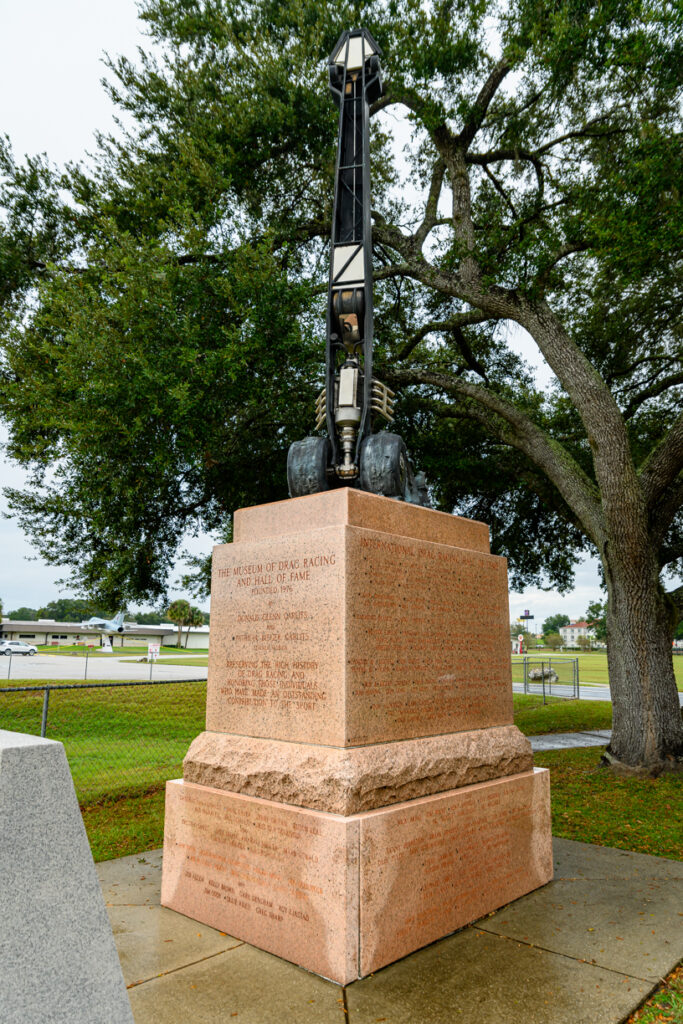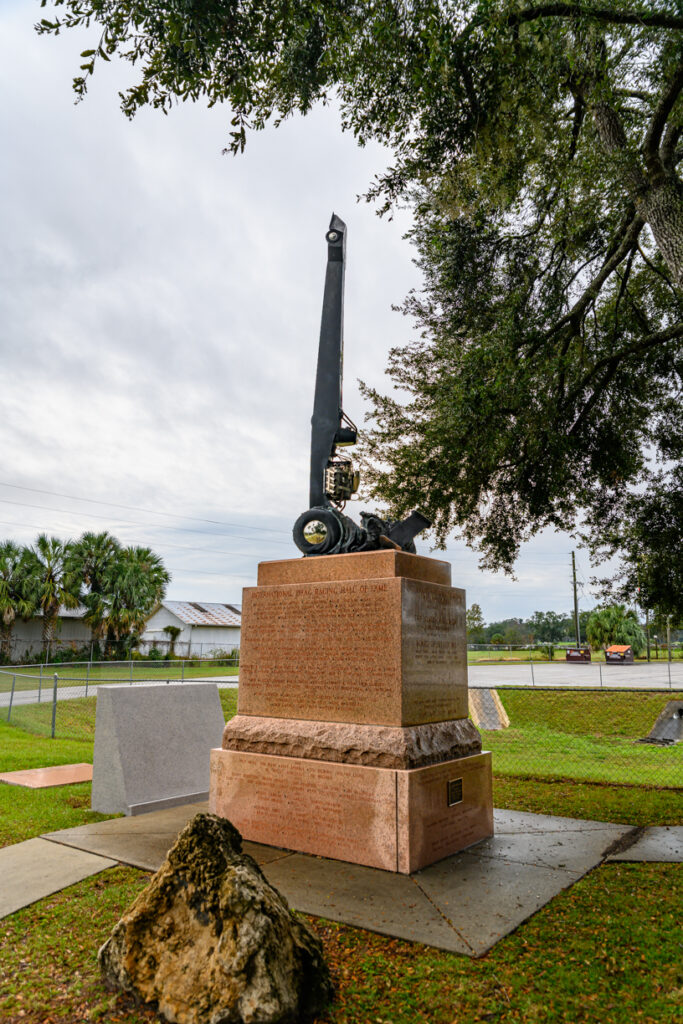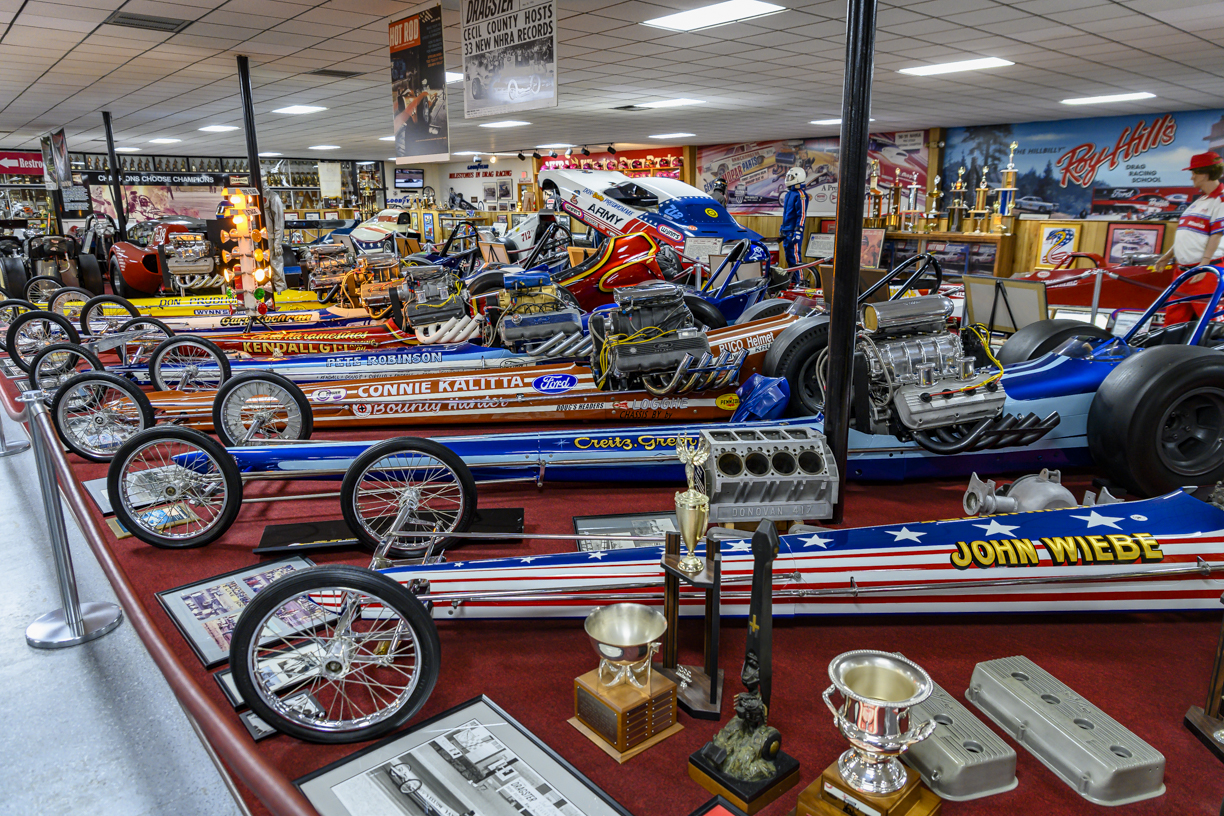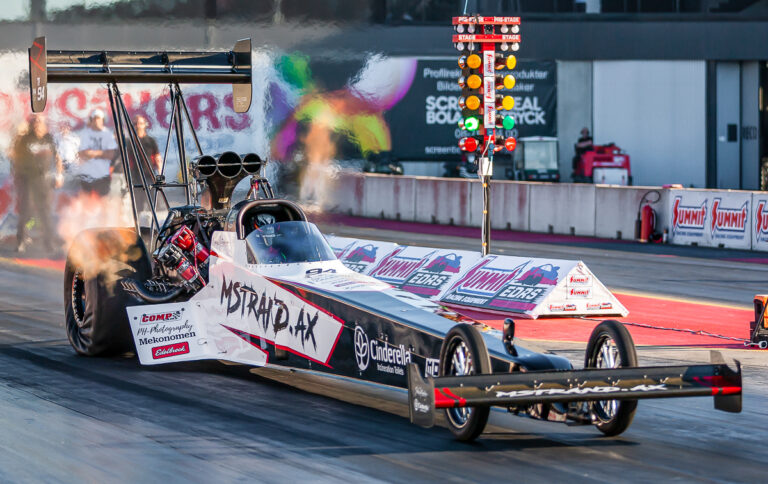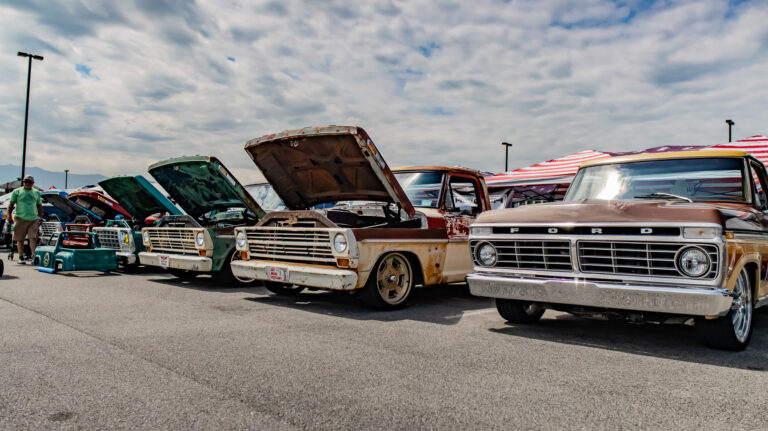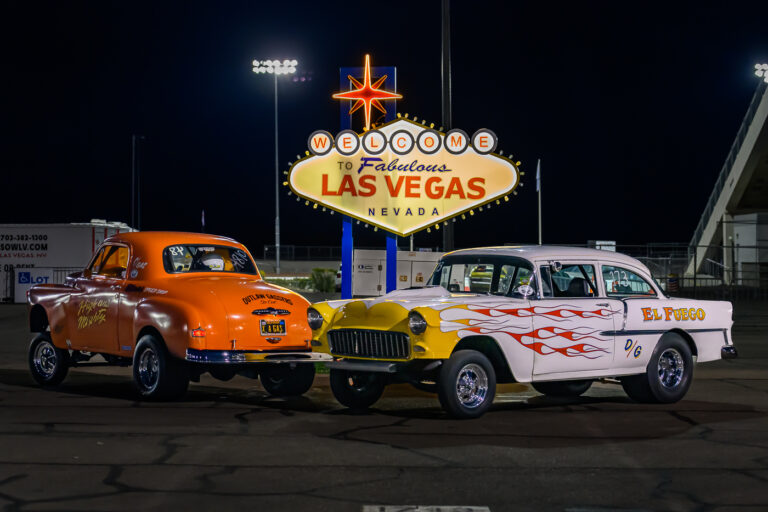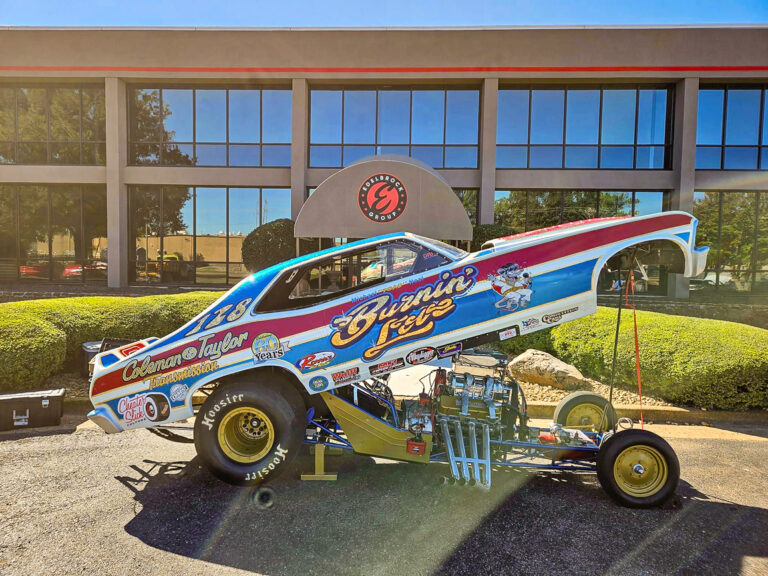On our recent trip to Daytona, Florida, for the Turkey Run (check it out here if you missed it), Roddy Merritt (our social media guy) and I knew the traffic would be horrendous due to the weather forecast and everyone heading home from the Thanksgiving holiday. We had a long journey home but decided to make it a little longer — because we were gluttons for punishment (and we’re gearheads). While in Daytona, I got the crazy idea to knock another item off our bucket lists. A trip over to Ocala to visit the Don Garlits Museum of Drag Racing/International Drag Racing Hall of Fame would add a few more hours. But hey, when would we ever be this close again?
Though Roddy hadn’t followed drag racing as closely as I had through the years, he was intrigued enough to agree as long as I promised to have him home in Jackson, Mississippi, so he could make it to work the next day. When you are talking about a 15-hour drive, what’s another few hours, right? Challenge accepted!
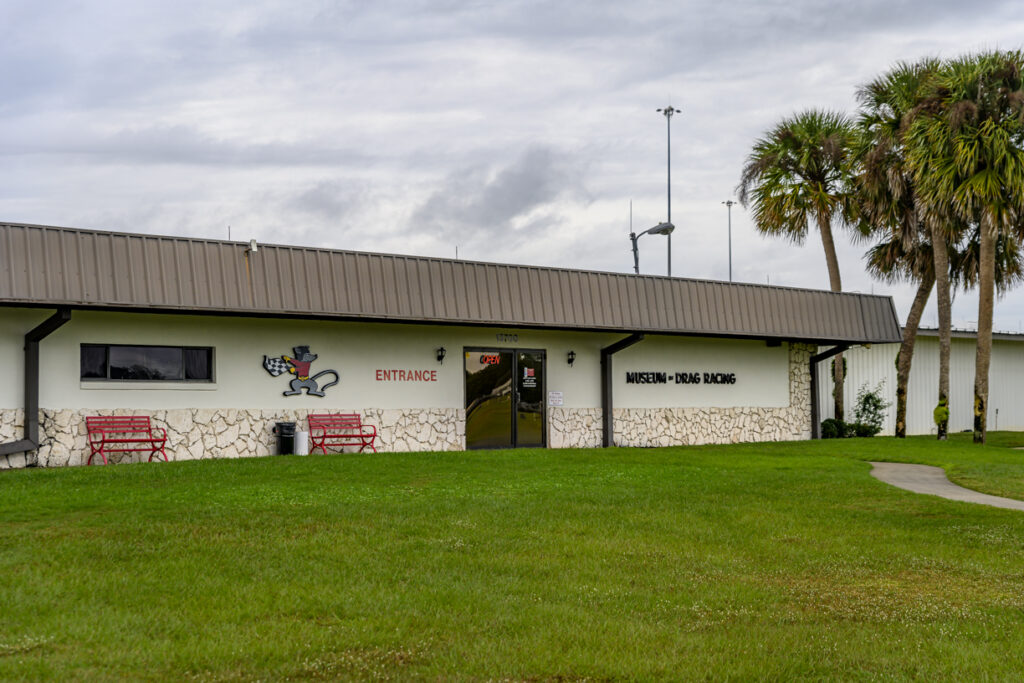
Museum Arrival
The museum didn’t open until 9:00 a.m., so we departed our Daytona beachfront hotel at 7:30 to make it there when they unlocked the door. The rain started as soon as we got our bags in the van. When we hit I-95, it was a full-on monsoon, making traffic a stop-and-go affair for the 12 miles to our exit. From there, it was two-lane roads over to Ocala with on-and-off showers. We missed the opening but were probably the second group of people to arrive.
The grounds are pretty expansive and well-groomed with lush green grass. We first noticed the huge Navy A-7 airplane perched in front of the building. Garlits was given the plane (which was being scrapped) as a thank-you for his help with Naval recruiting through the years — all he had to do was get it there from Cecil Field. The A-7 makes for a cool visual and ties into one of the coolest advertising campaigns ever executed.
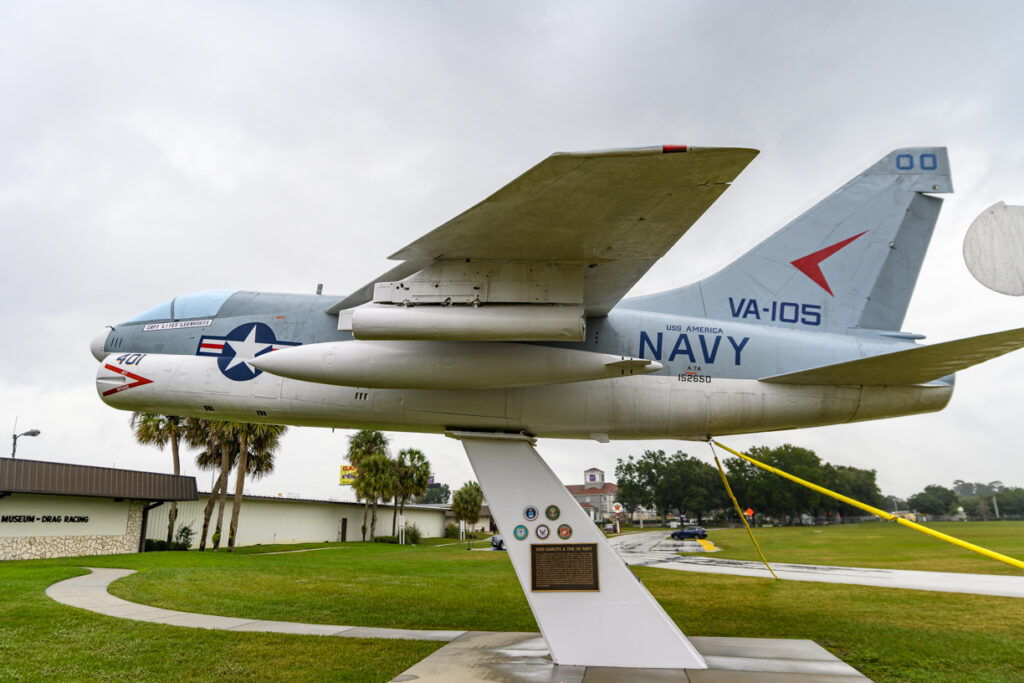
The museum opened in 1976 but has expanded significantly since then. The entrance takes you into the gift shop, which has plenty of great gifts to purchase, including some really cool die-casts of Garlits and various other cars. We quickly noted what we would buy on the way out before buying our tickets. Admission is $22 for adults. If you are a drag racing fan, you’ll find that is a deal as soon as you go through the door.
Inside the Museum
With a self-imposed two-hour limit to our stay, we paused and looked at each other as soon as we entered the main room. For car nuts like us who appreciate the history of automobiles and racing, it would be extremely difficult to abide by our time limit. The museum practically punches you in the face when you cross that threshold. It is a cacophony of color with cars, memorabilia, and photography that seems to cover every inch of floor and wall space. The cars are impeccably restored, but the number of photos and documentation that was kept and/or collected of each car is truly impressive. Garlits was either a hoarder or a prognosticator, but it appears he didn’t let go of anything. Placards at each car explain their significance to Garlits and/or drag racing in general.
Just inside the door, the first car to catch my eye was none other than the “Bo-Weevil,” a Memphis dragster owned by Hall of Famer Ray Godman (1991) and driven by another Hall of Famer, Preston Davis (2015). Those guys are legendary Memphis Rodders, and that car was famous for its exploits that helped make them Hall of Famers. Seeing a familiar car in such a prominent place in the museum was cool.

Garlits History
Turning down the first aisle starts you down the journey through Garlits’ drag racing life (not necessarily in order). On the left was a replica of his first dragster. Don built his first dragster at the shop where he worked in Tampa in 1954, using two sets of Model T frame rails for a long wheelbase. He won his first NHRA event at the “Drag Safari” in 1955. Hot Rod magazine dubbed the car so ugly that it wouldn’t run a picture of it. The car ran 12.10 @ 108.17mph.
To the right of his first dragster sat Garlits favorite car. Swamp Rat 1 was built in Don’s home garage and ran from 1956 to 1961. He set his first world record of 8.79 @ 176.40mph, but its fastest ET was 8.23 @ 180.00mph. Garlits and friend Tommy Lemons restored the car in 1978. I guess he didn’t like Hot Rod calling his first dragster ugly because this one is gorgeous.

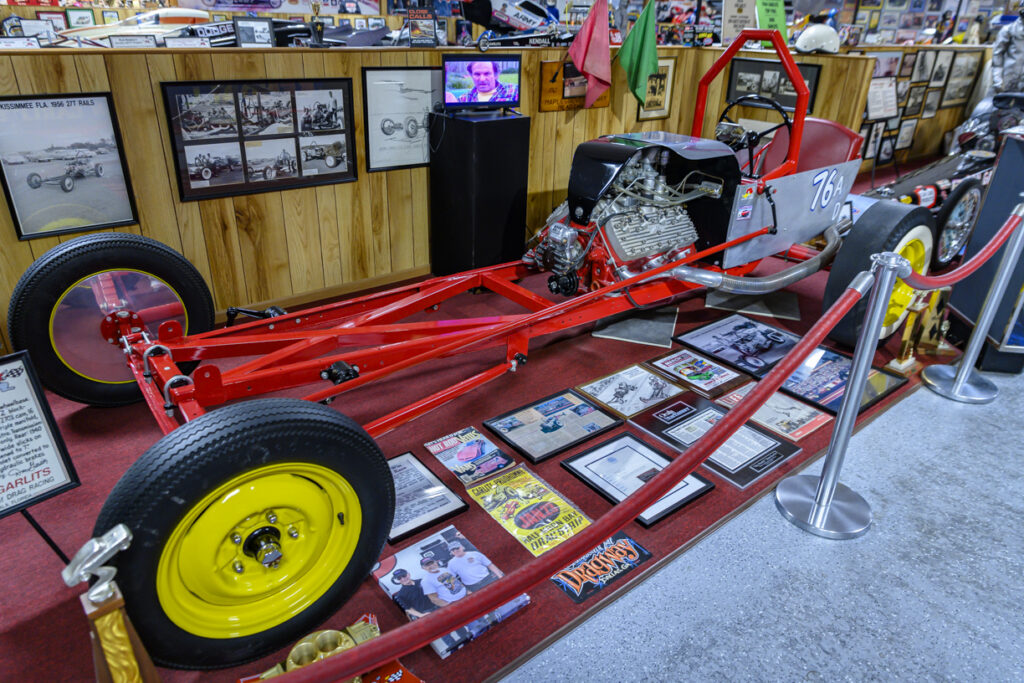
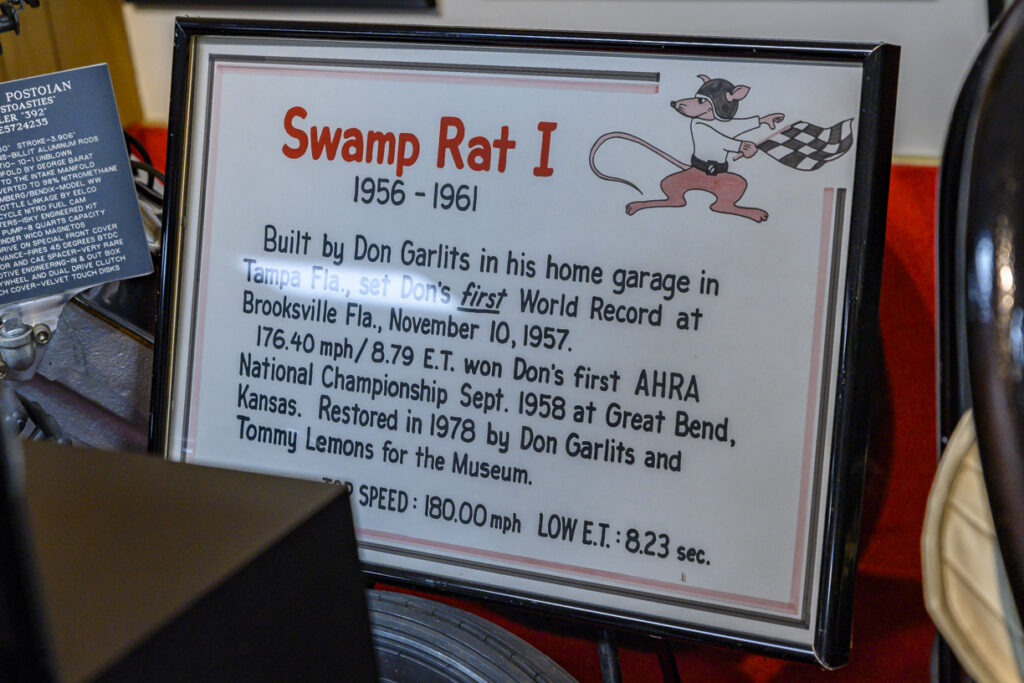

After the first two cars, things don’t appear to go in any logical order, but it doesn’t really matter when looking at cool cars. The WynnsJammer Swamp Rat 6 sits next to the wild “Sidewinder” Swamp Rat 27. Garlits broke his back in a crash in the WynnsJammer car. The Sidewinder is a great example of Garlits’ innovative mind. He is always trying to gain an edge somehow. The Sidewinder engine is mounted sideways to take advantage of the engine torque to try to get more traction on the rear wheels. Garlits said the experiment worked in theory but really didn’t give him an advantage as it lost too much horsepower through the drivetrain. It ran a best of 6.20 @ 230mph.
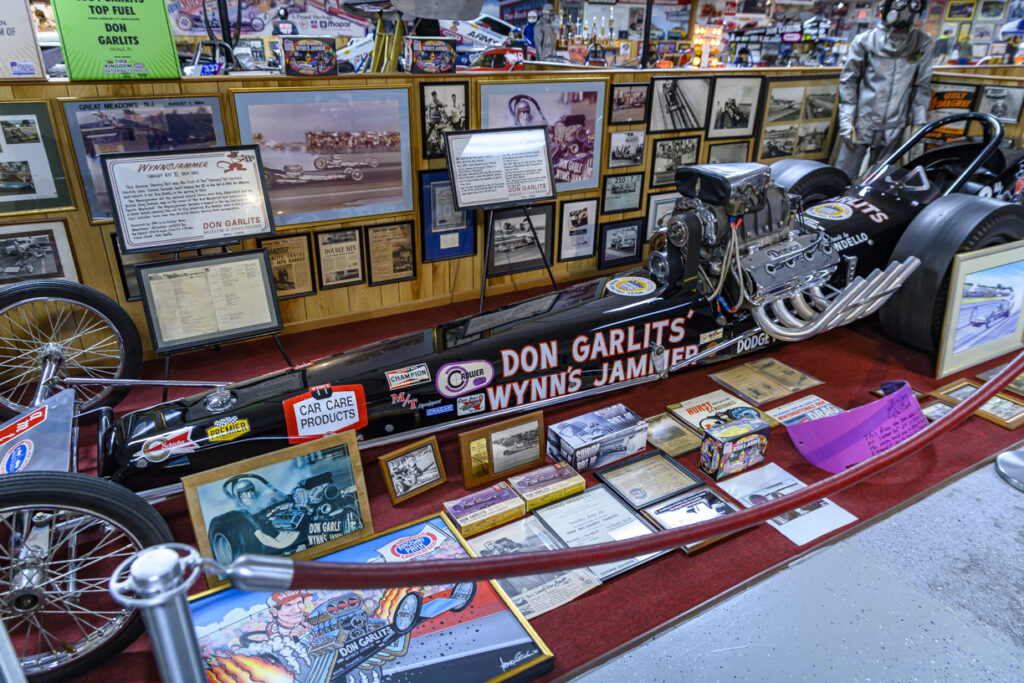
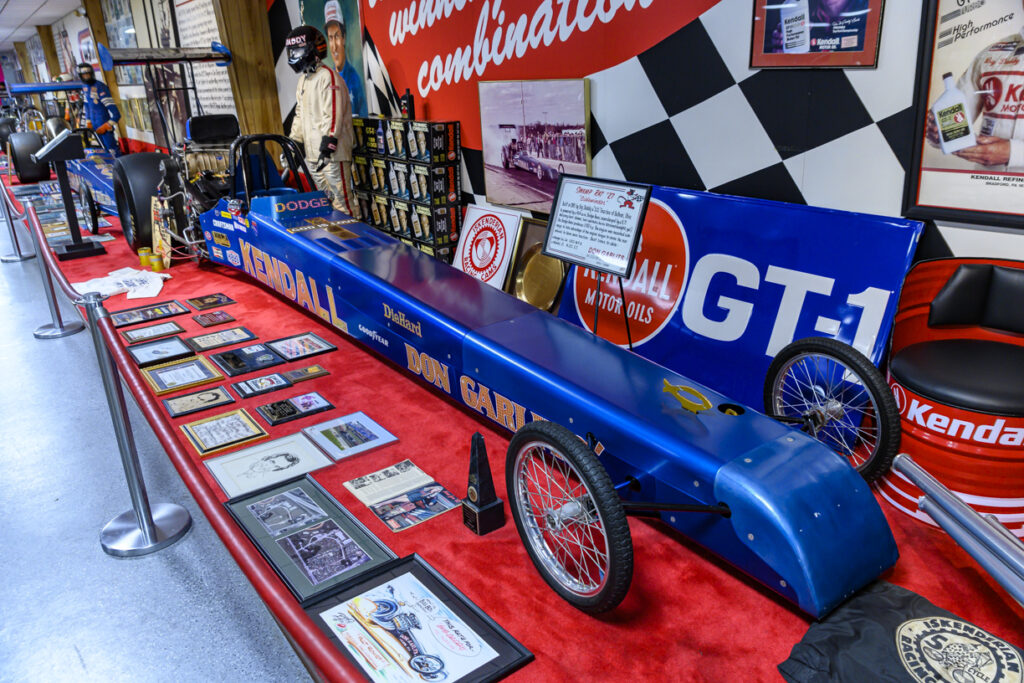
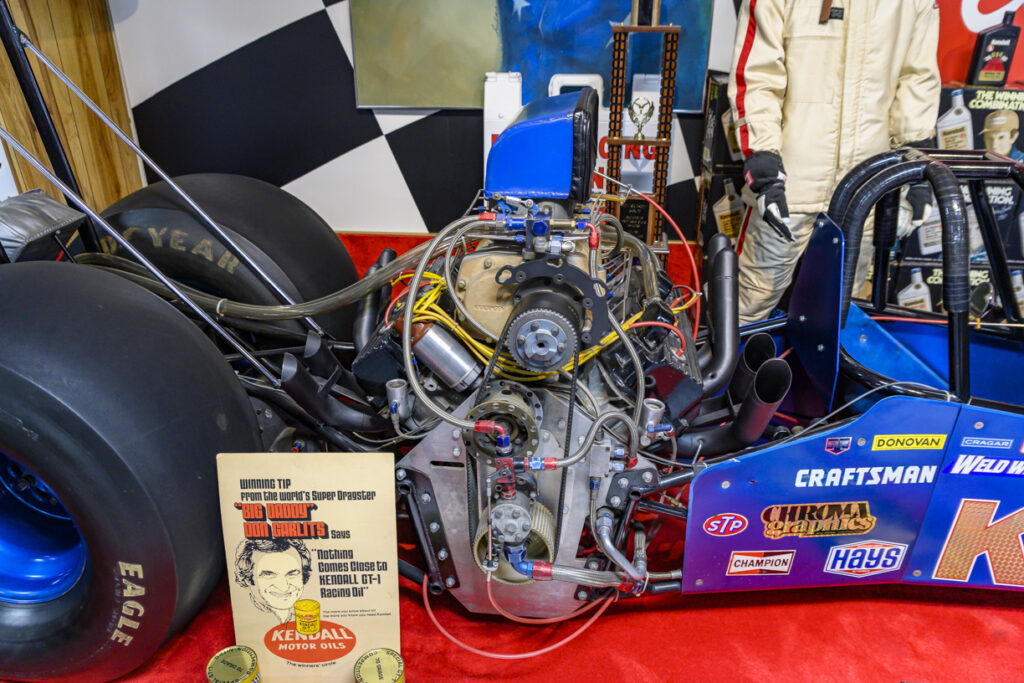
Next up was Swamp Rat 10, which ran from ’65 to ’67. It was the first one to feature the new 426ci Dodge Hemi. Swamp Rat 22 from 1975 was one of Big Daddy’s most successful cars and the one that got him an NHRA World Championship. It was also the first Top Fuel car to go over 250mph with a 5.63 E.T., a record that stood for seven years!
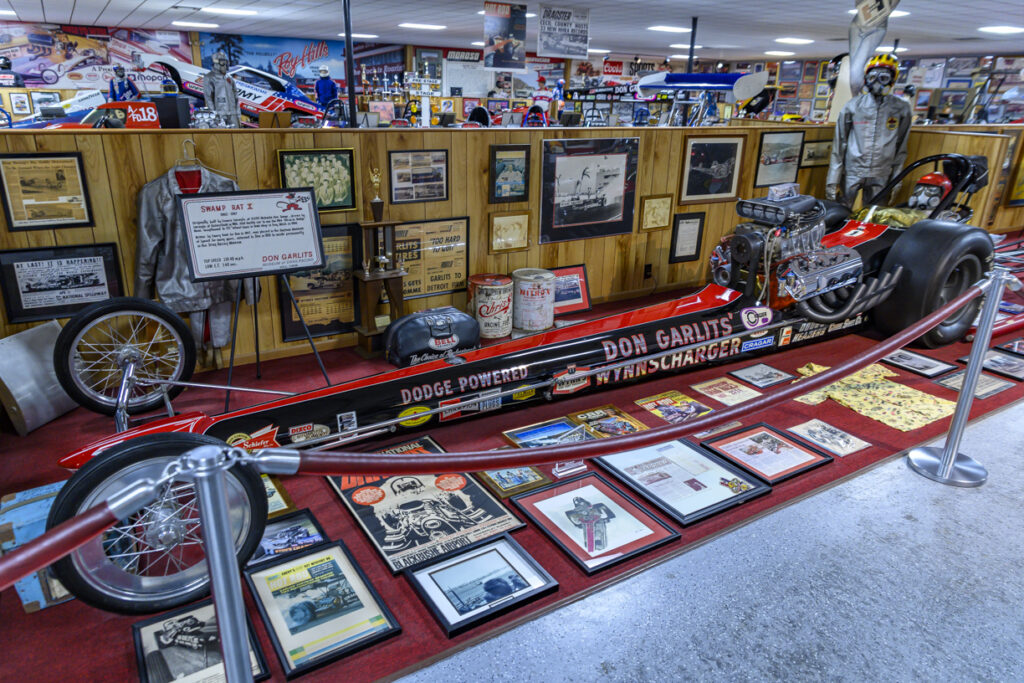
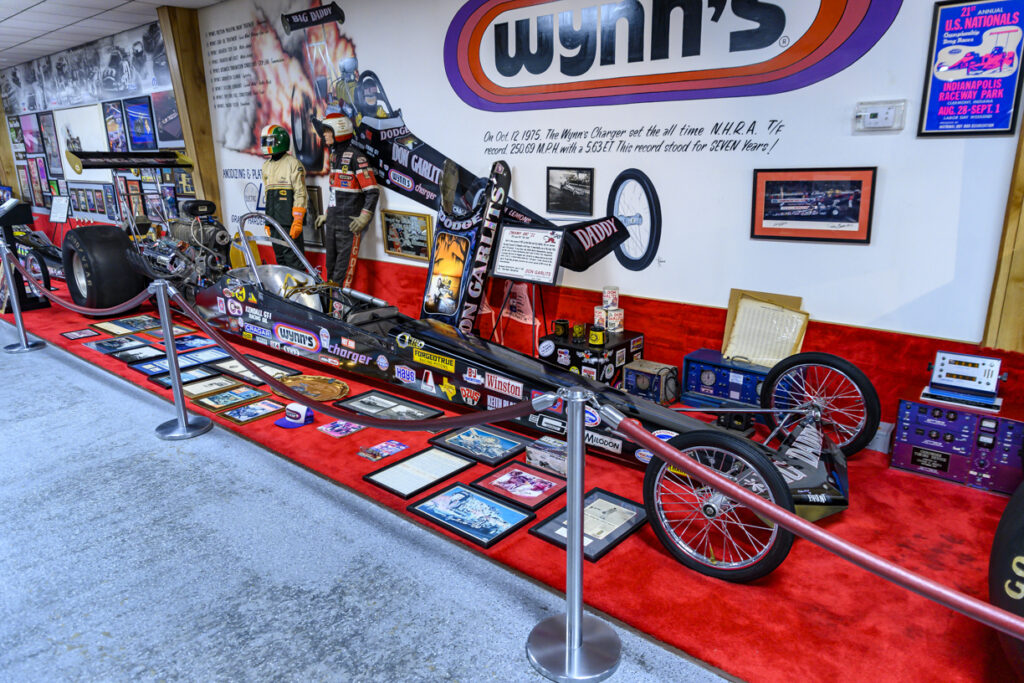
Swamp Rat 13 was a significant dragster for two reasons. The first was the now-famous picture of the clutch explosion on the line at Long Beach, California, that split the car in half and blew part of his right foot off. The second reason was that the accident led to the development of the rear engine dragster. Garlits was running a two-speed planetary transmission when a sprag failed, causing the drum inside the trans to spin over 25,000 RPM.
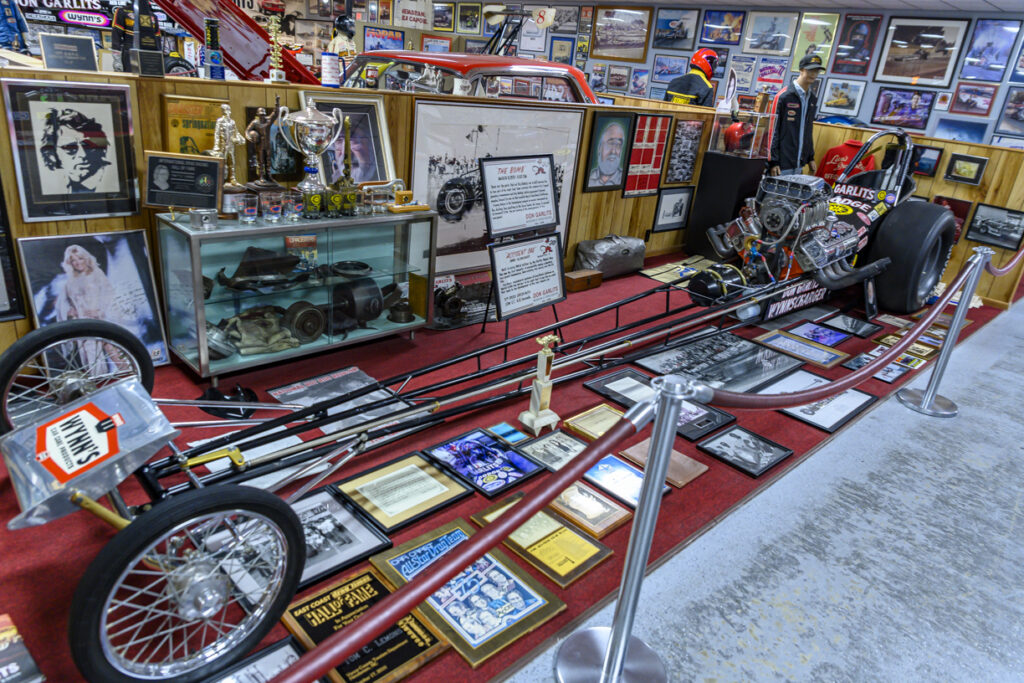
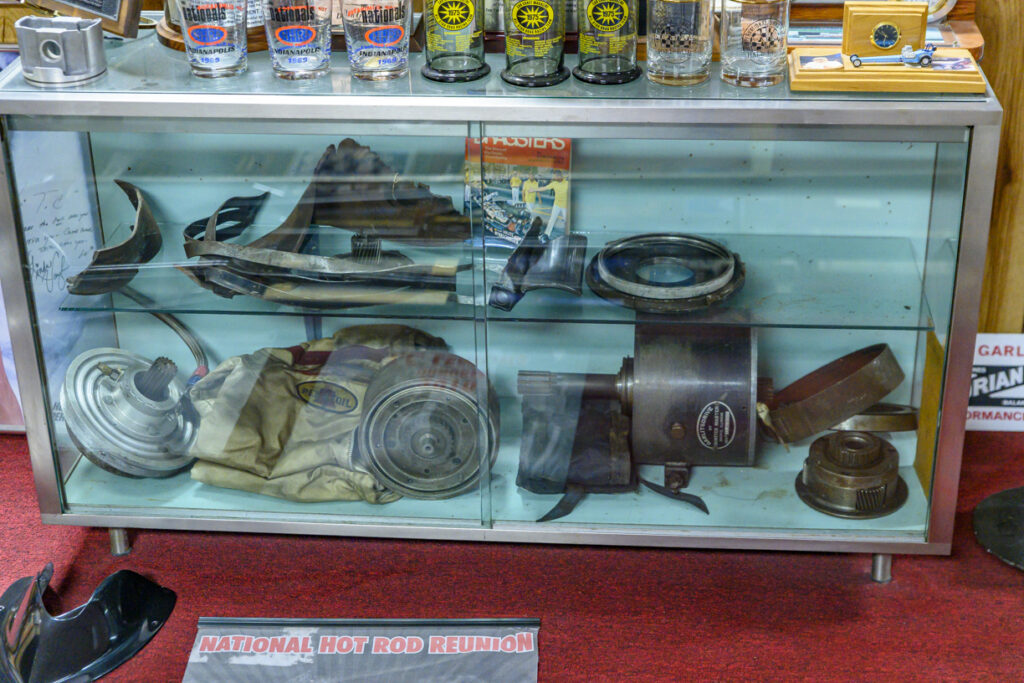

Museum Oddballs
Across the back of the main showroom sit a few innovative creations of note. “The Bug,” owned by Dick Craft, ran at the Muroc Dry Lake beds back in the ’40s. As Craft continued stripping parts off the car weekly, people began calling it a “rail.” The name stuck, and dragsters have been known as rails ever since.
Lloyd Scott’s “Bustle Bomb,” built in 1955, was the first dragster to go over 150 mph. But, what really sets it apart is that it ran a 1951 Olds 348ci V8 in the front and a 1950 Cadillac 391ci V* in the rear. Both engines drive into one ring gear via two pinions. It’s an engineering marvel!
The Speed Sport was a 27 T rear-engine roadster running a ’53 Chrysler 331ci Hemi. It set a record of 169mph in 1957 and was the first drag car to wear “bike” tires on the front. Not only is it an innovative car, but it’s also a beautiful ride!
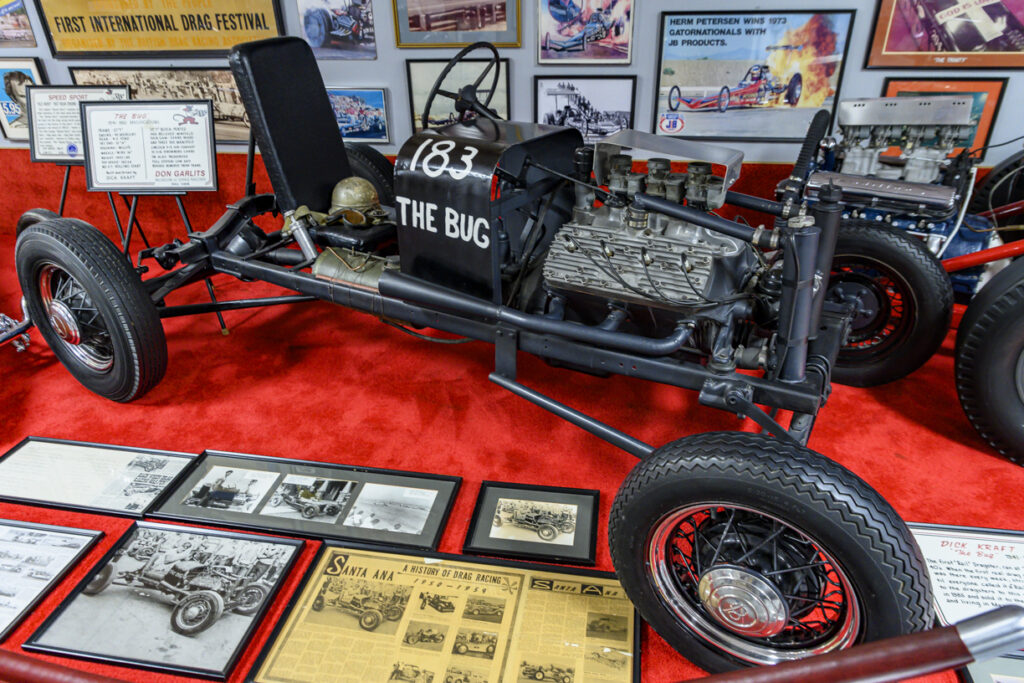
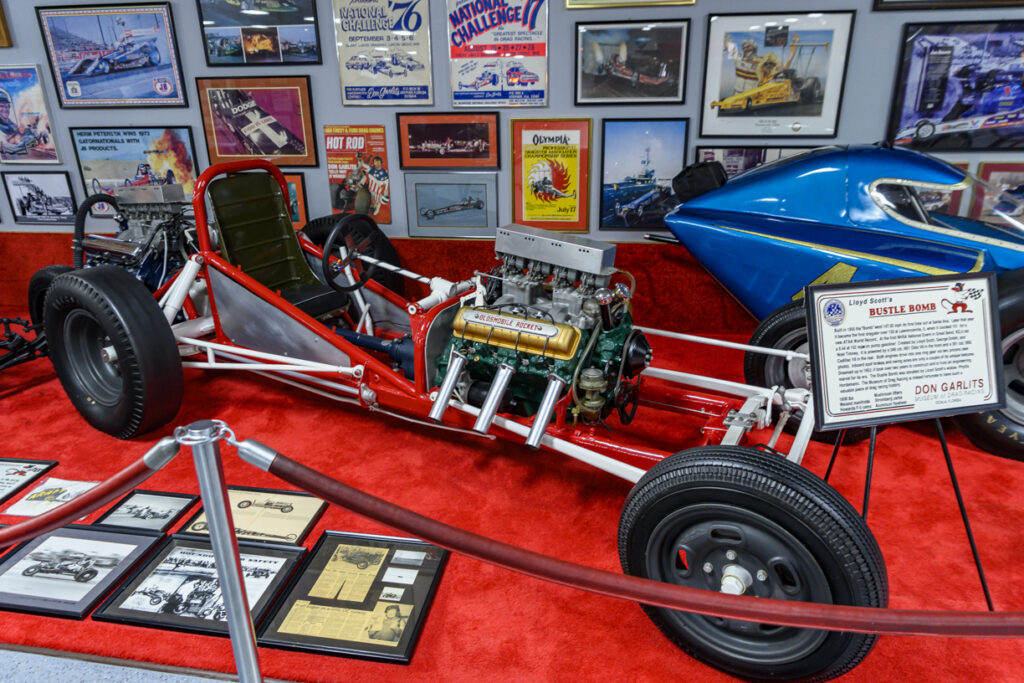

The 1964 “44” Streamliner is an incredibly gorgeous car commissioned by the West Coast team of Gene Mooneyham, Wayne Ferguson, Jerry Jackson, and “Jungle” Larry Faust. Crosswinds during testing affected the handling, but the results were promising. Unfortunately, the project was scrapped due to inadequate funding.
Last but not least, we can’t overlook Connie Kalitta’s Bounty Hunter from 1962 sitting on the end of the aisle. Kalitta didn’t like the way the car was running and asked Garlits to take a lap with it so he could watch. Garlits set a record on the run of 180.36mph. After the run, announcer Bernie Partridge coined the nickname “Big Daddy,” and the rest is history.
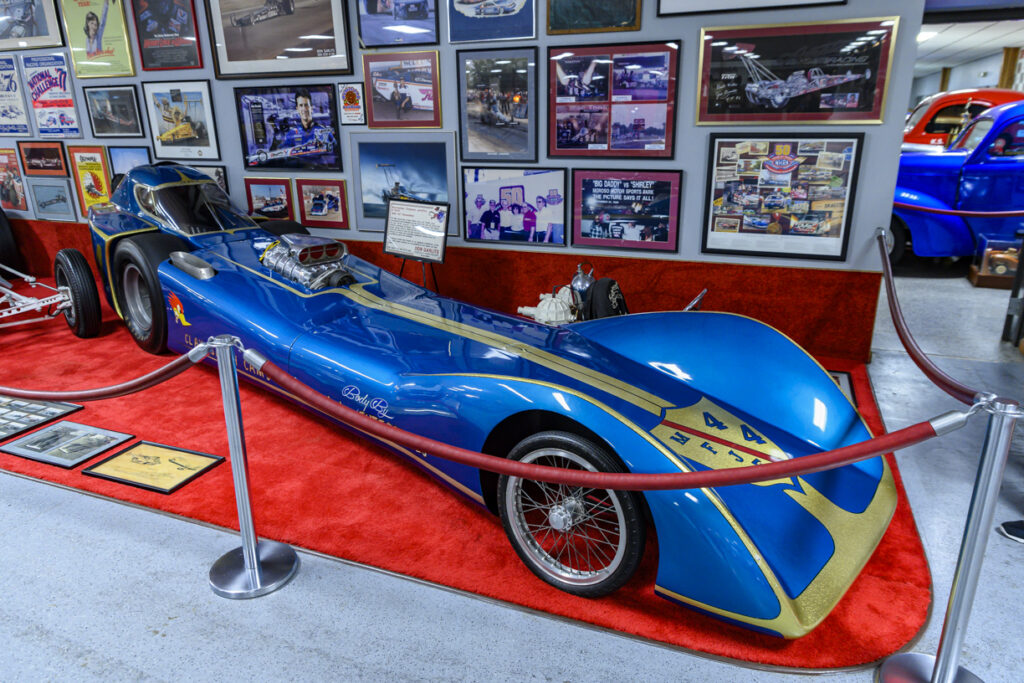
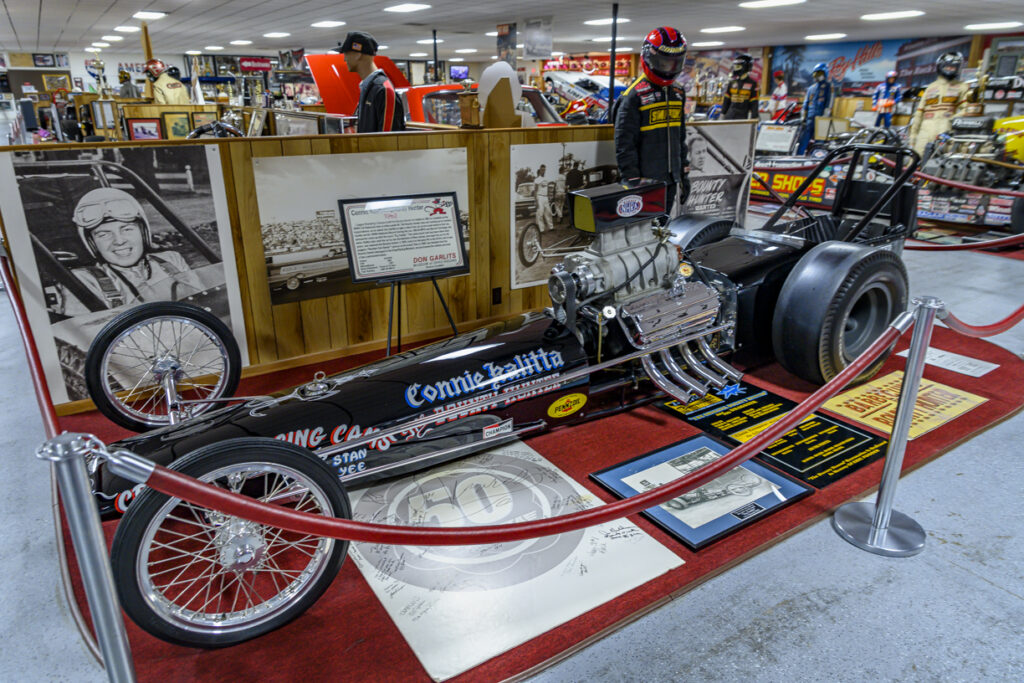
Other Notables in the Main Room
Seven amazing front-engine dragsters grace the middle aisle. Two really stood out to us. The first is John Wiebe’s, which was the last front-engine dragster to win a national event in Top Fuel. The second was Connie Kalitta’s 427 SOHC Bounty Hunter. Beyond those is the Setzer-Buttera T/F car, which was an attempt to make a monocoque T/F car. Three standout Prudhomme cars are on display: the Army Funny Car, the Mattel Dragster, and the Wedge Dragster. We had never seen Ed Roth’s Yellow Fang AA/Fuel Dragster! Tom “Mongoose” Mcewen’s Coors Corvette is also displayed in this room.


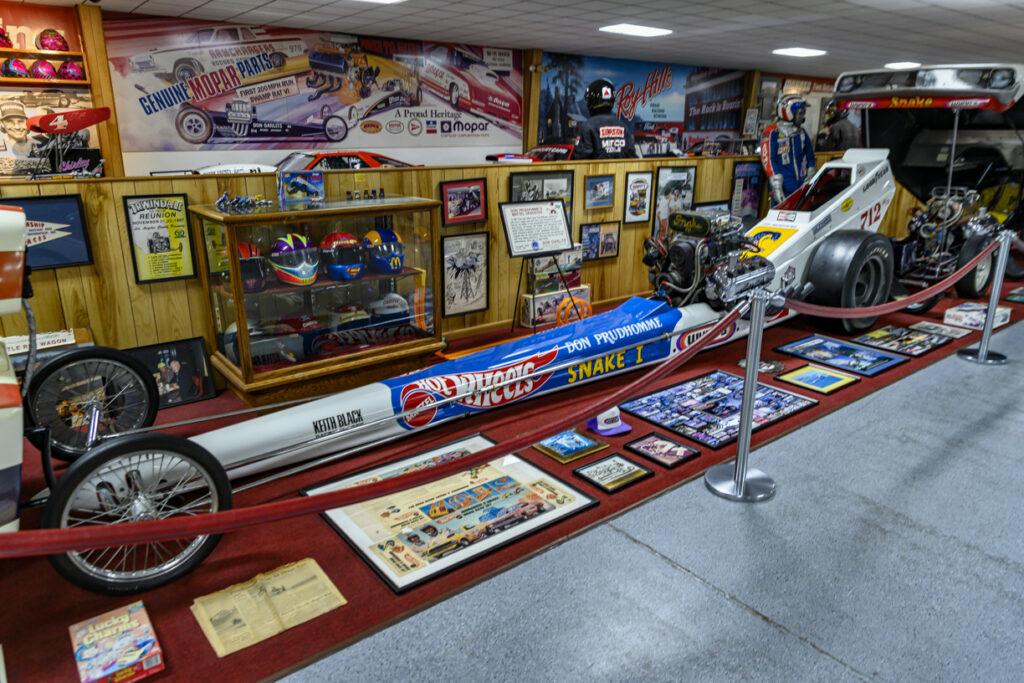
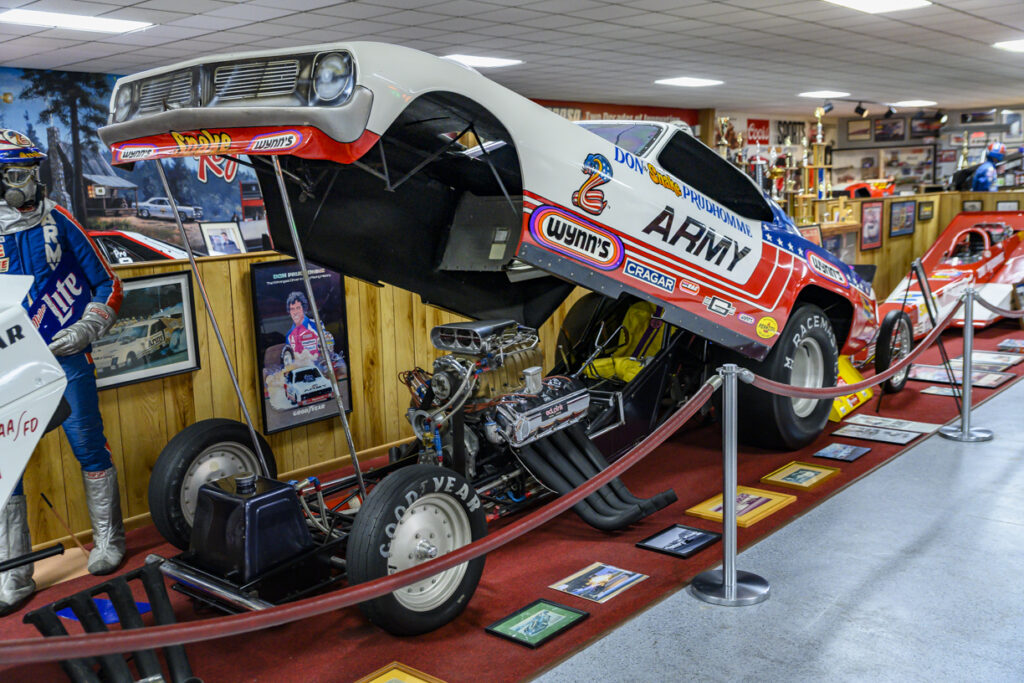
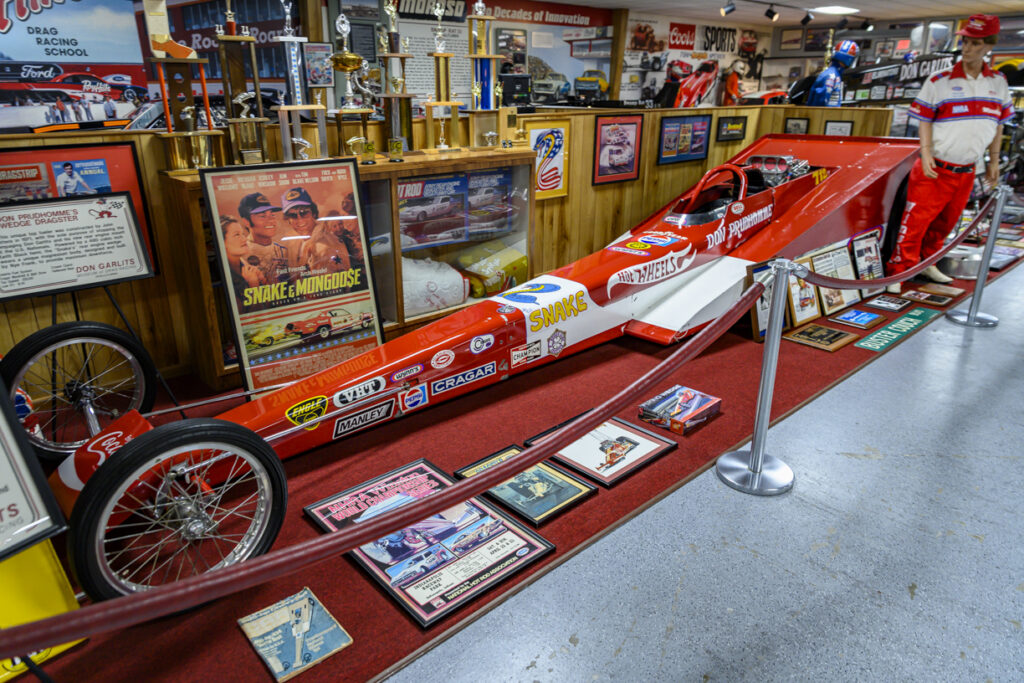

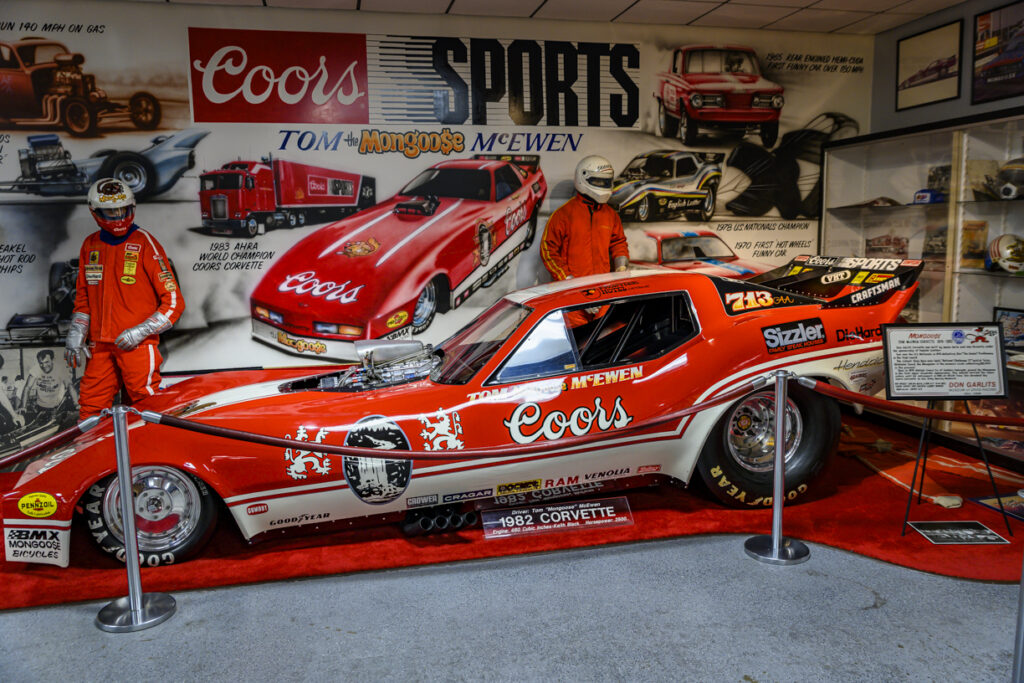
Almost every car in the museum stands out, but we’d be remiss if we didn’t mention three more in the front room. Tommy Ivo’s dual-engine, Buick-powered slingshot is one of the most famous cars ever. Darrell Alderman’s 1991 Dodge Daytona broke every award in Pro Stock on the way to the championship and probably still holds the record for most points in a single season. Lastly, there is a beautiful display of Shirley Muldowney’s 1980 Attebury car and every helmet she ever wore!
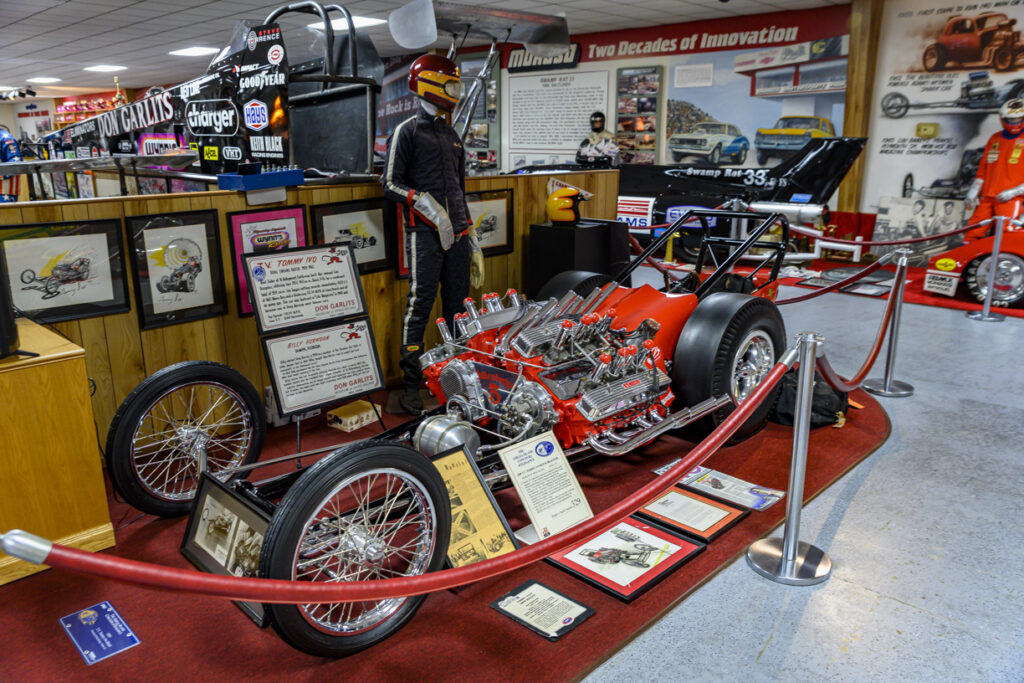

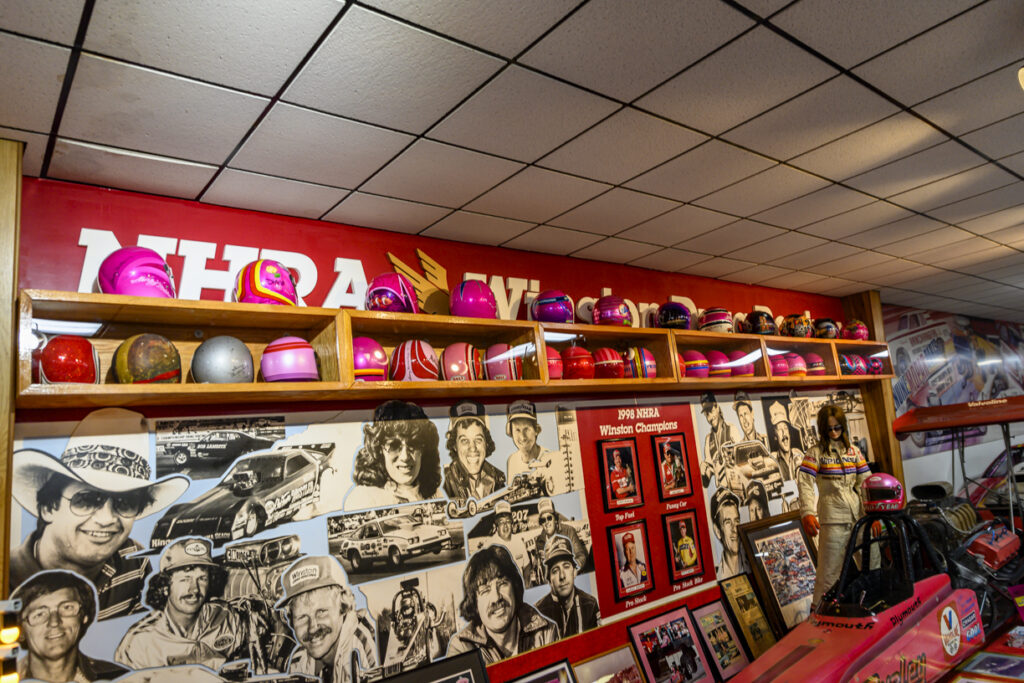
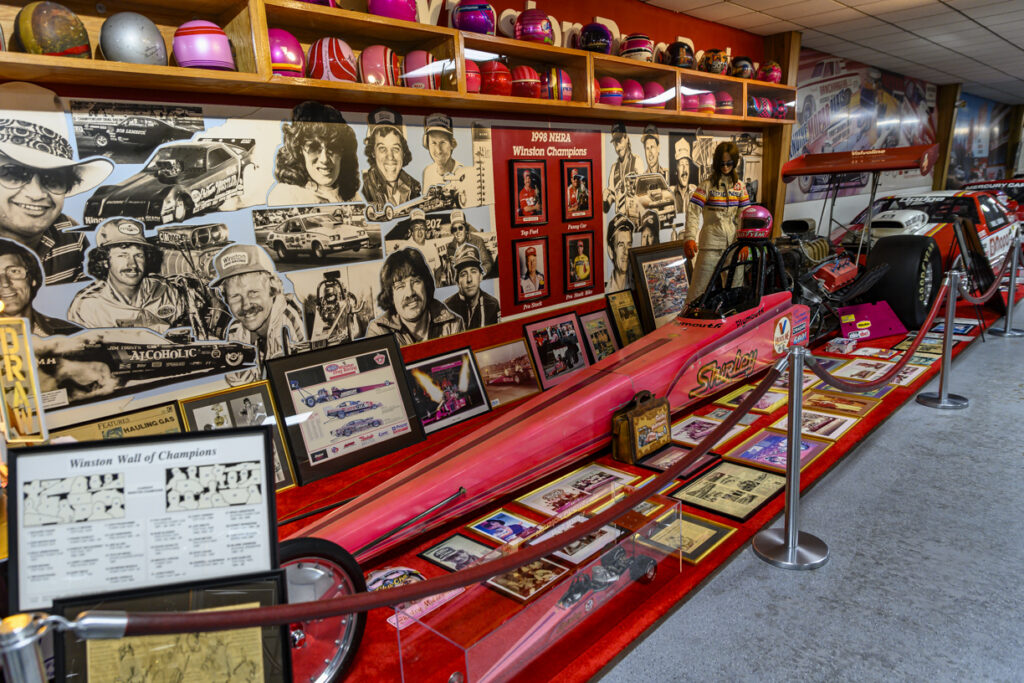
“TV” Tommy Ivo’s iconic twin-engine dragster. Darrell Alderman’s dominating Pro Stock Daytona. The legendary Shirley Muldowney’s dragster sits in front of the Winston Wall of Fame and a collection of her helmets through the years.
What is a museum without trophies? Garlits’ wall of fame is an absolute testament to his years of winning and impressive career. Most would happily have one case; he has an entire museum wall!
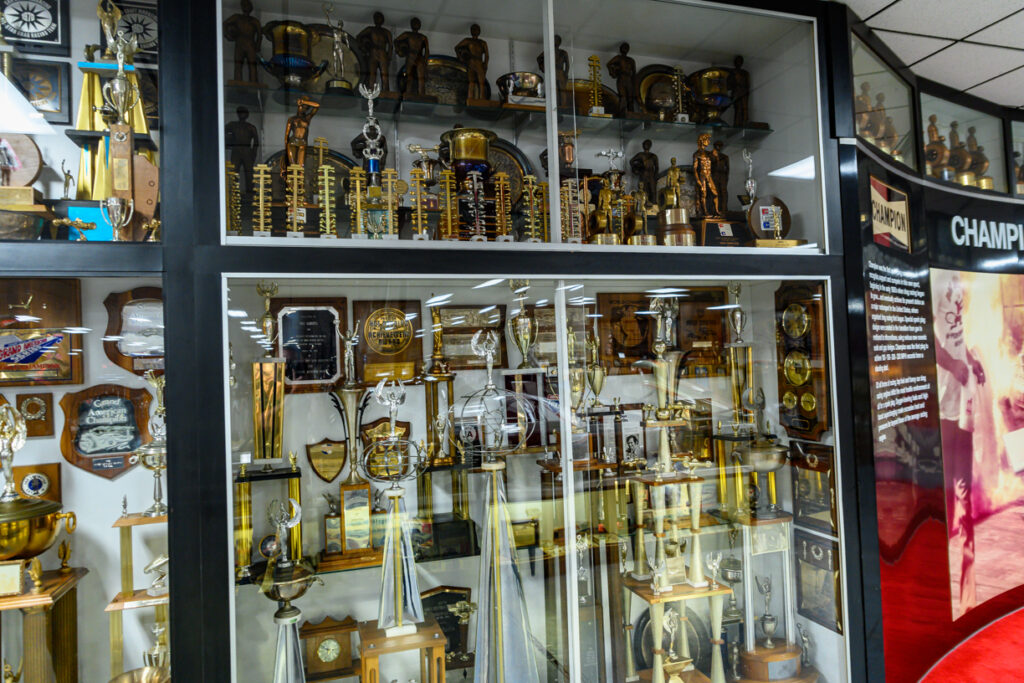
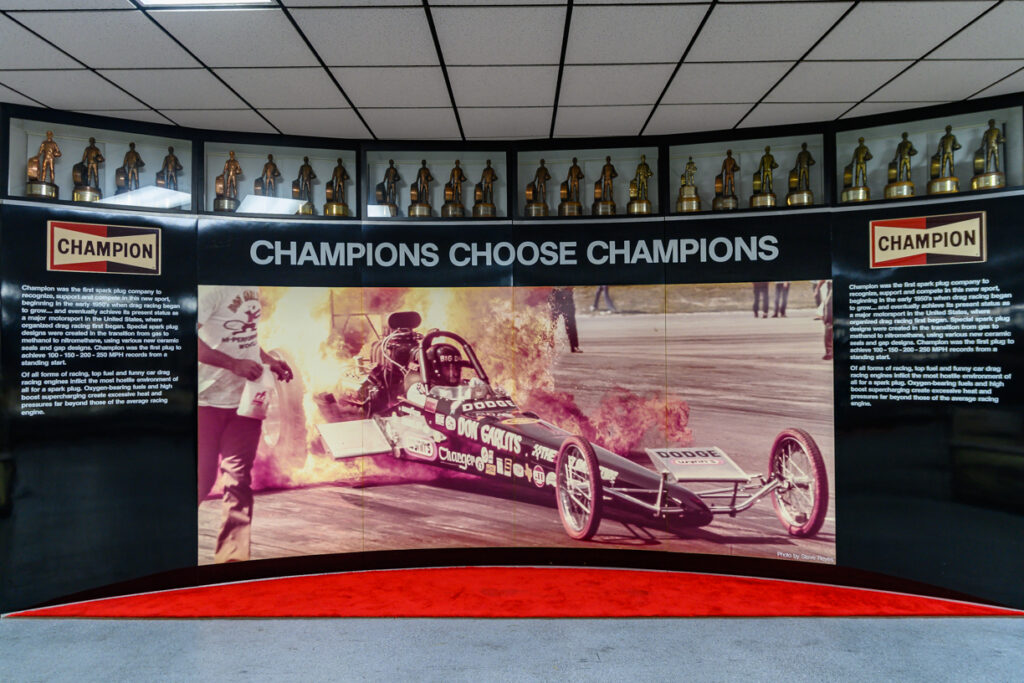

The Engine Room
Impressive is a word you will use repeatedly in the drag racing museum. If you think the cars and memorabilia are stunning, you will pick your jaw off the floor as soon as you step into the engine room. There are fully built rare engines, a wall of intakes and carburetors, and even a tribute to the great Henry “Smokey” Yunick, including the dynamometer from his shop.
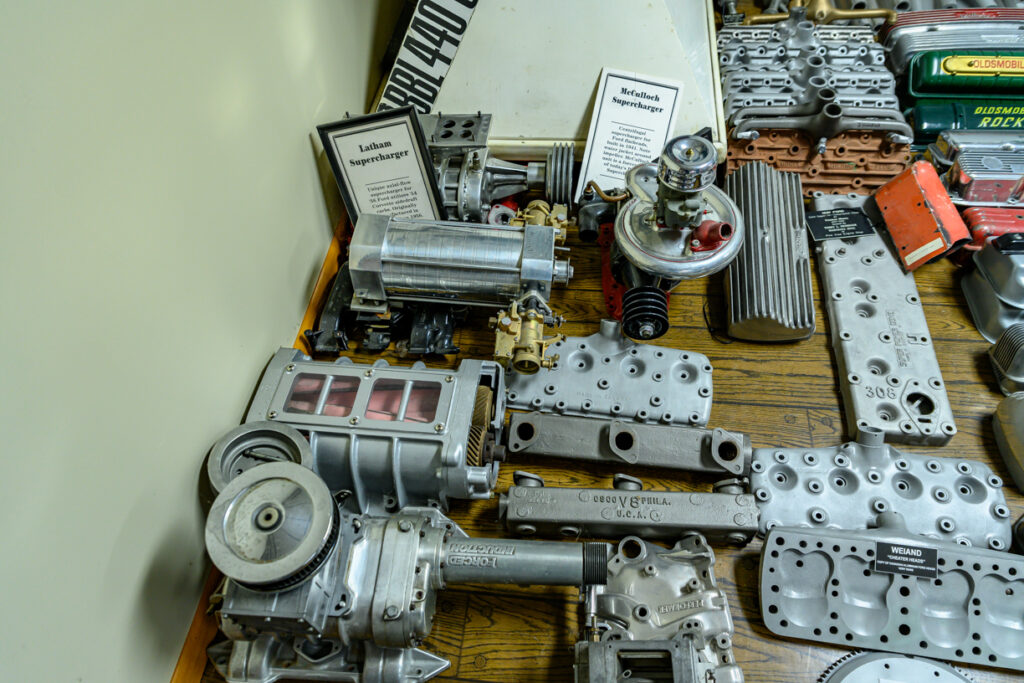
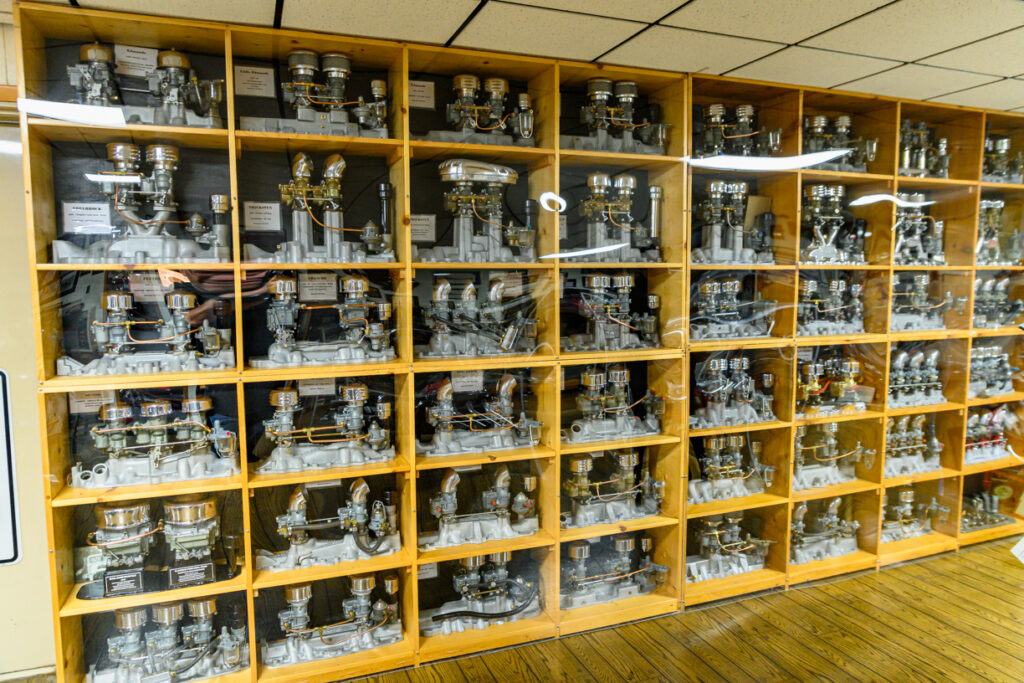
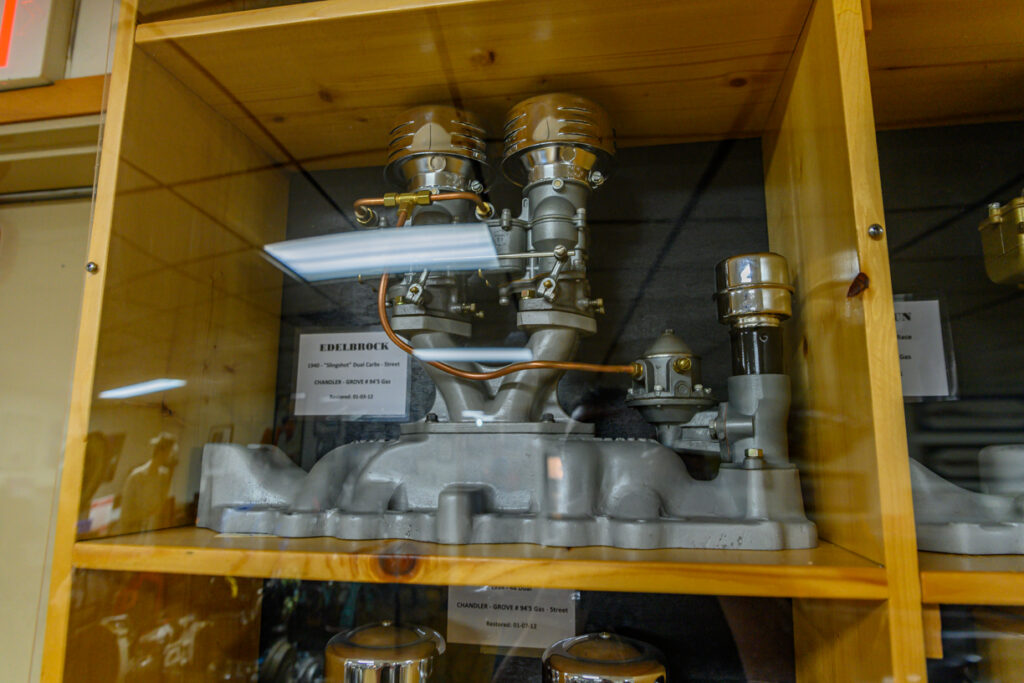
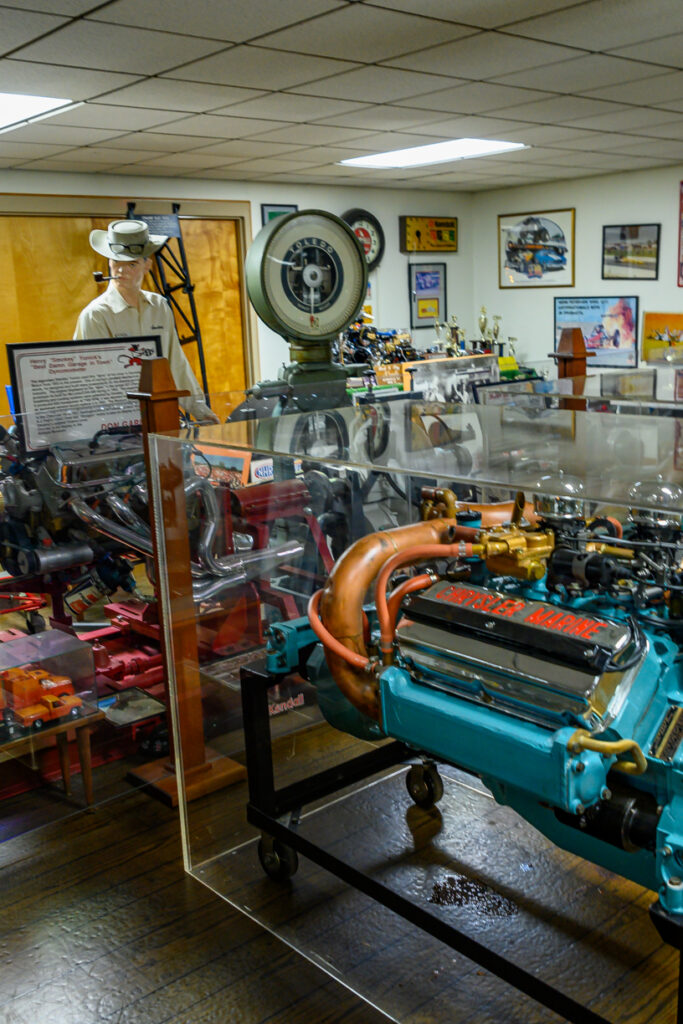
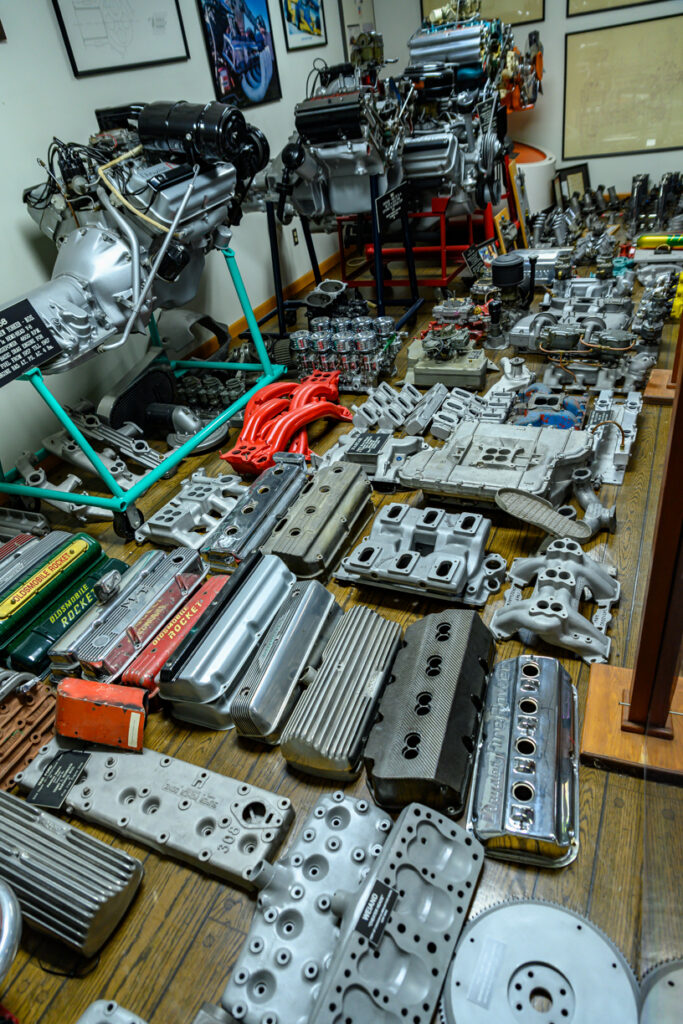
We would love to have any one of the engines in the room — even the cutaways or broken ones! Garlits’ crew at the museum have painstakingly restored some super-valuable engines for our viewing enjoyment. There is everything from flatheads to giant Top Fuel engines.
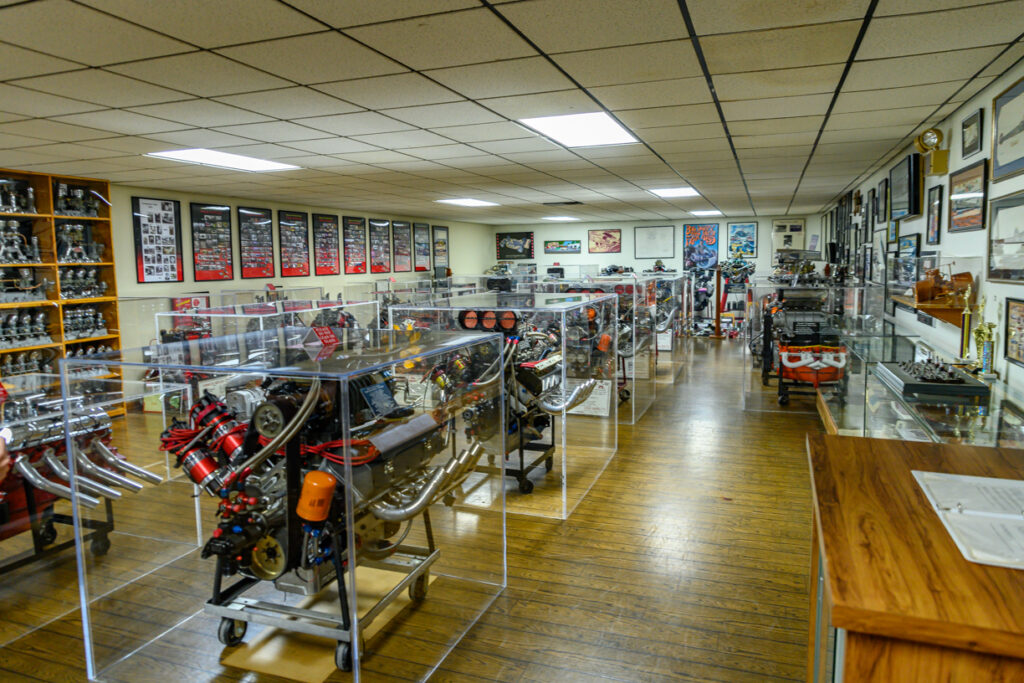
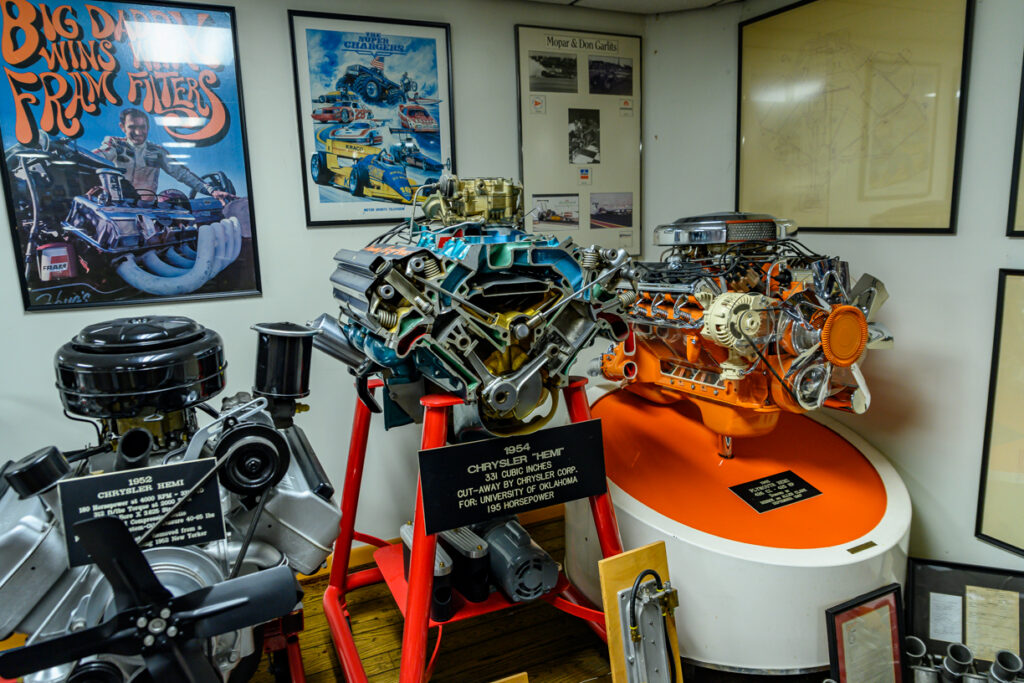
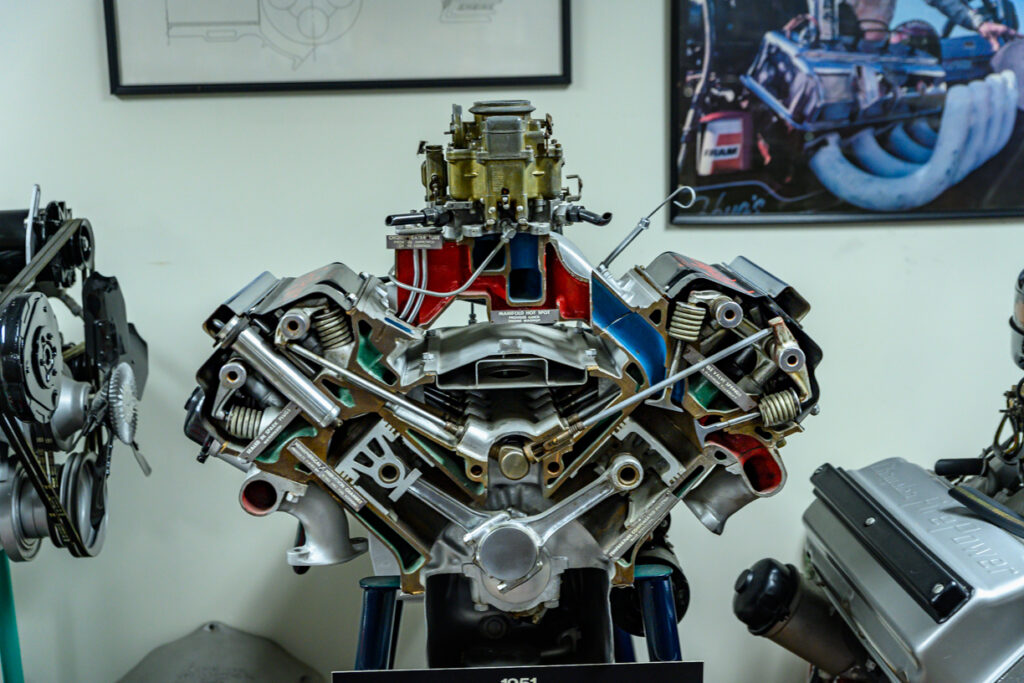
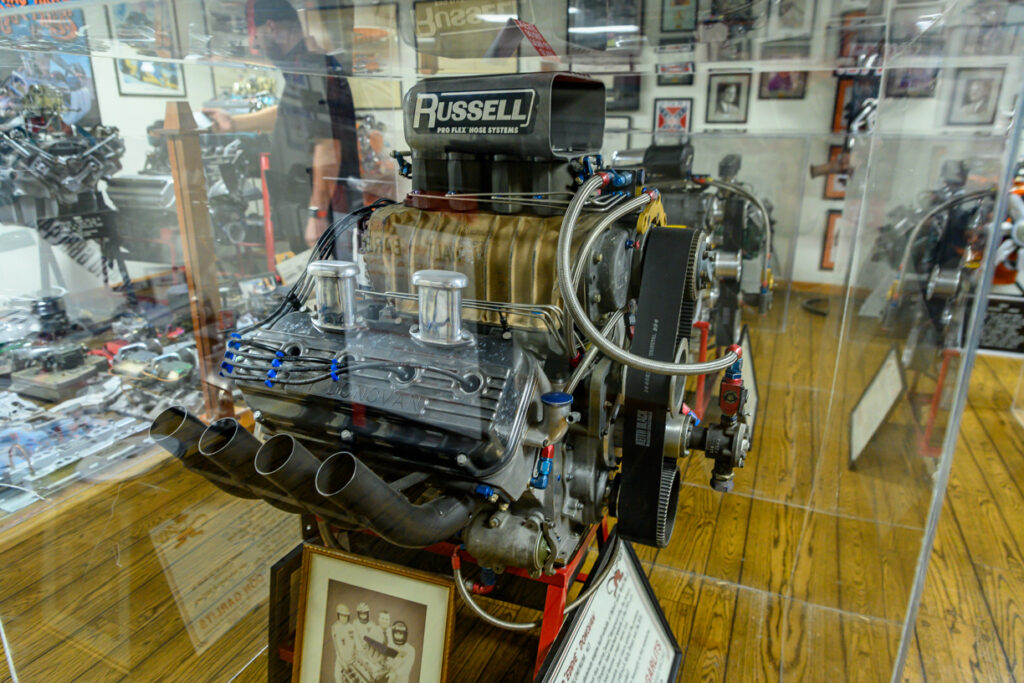

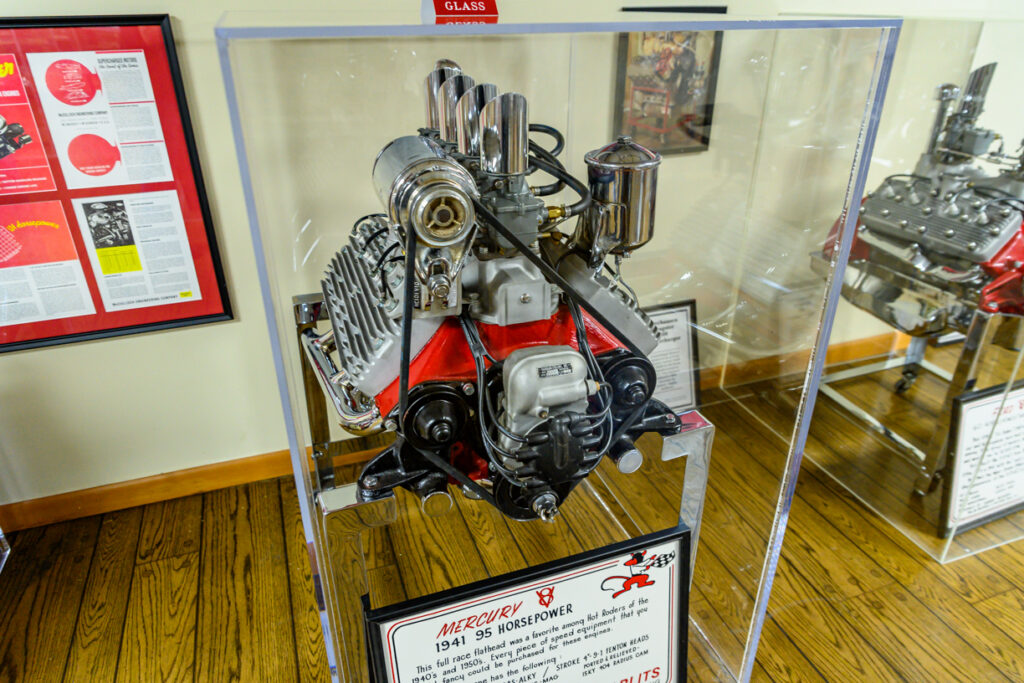
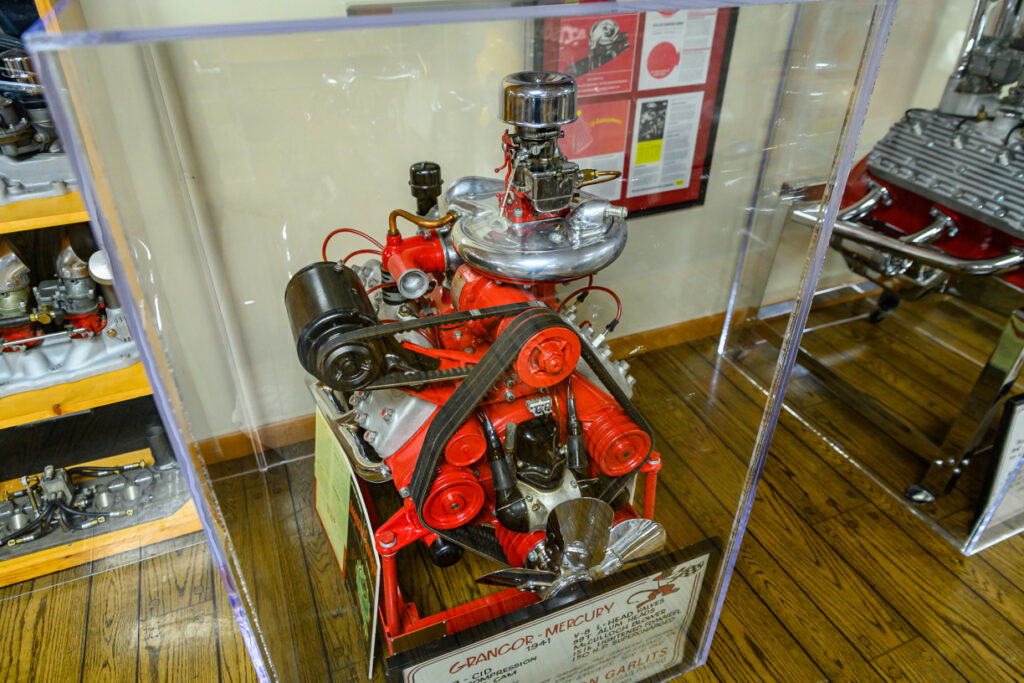
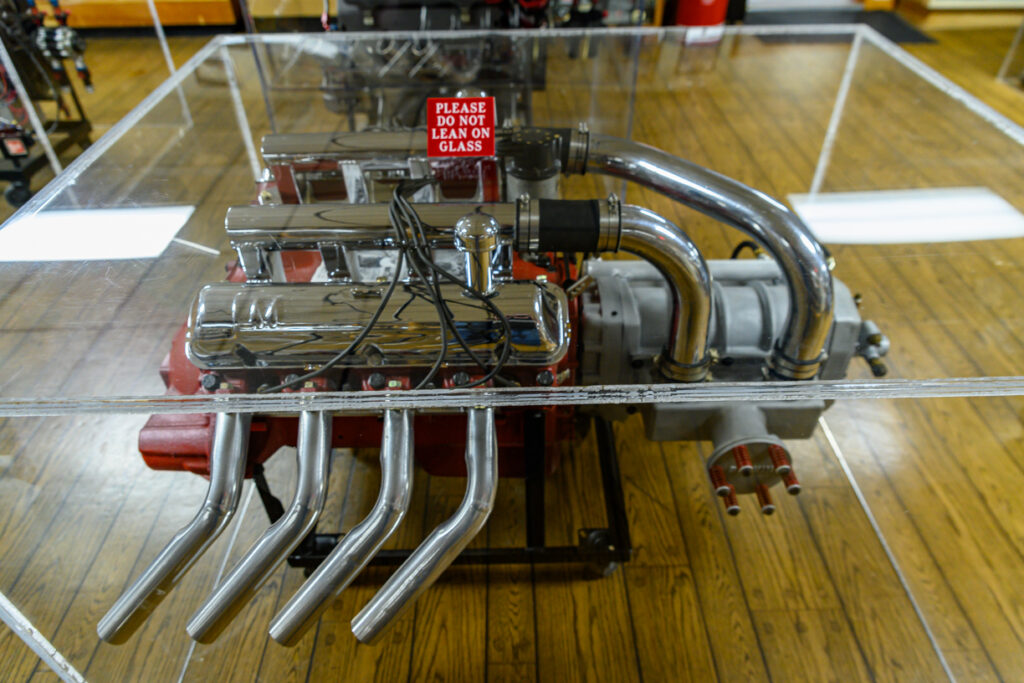


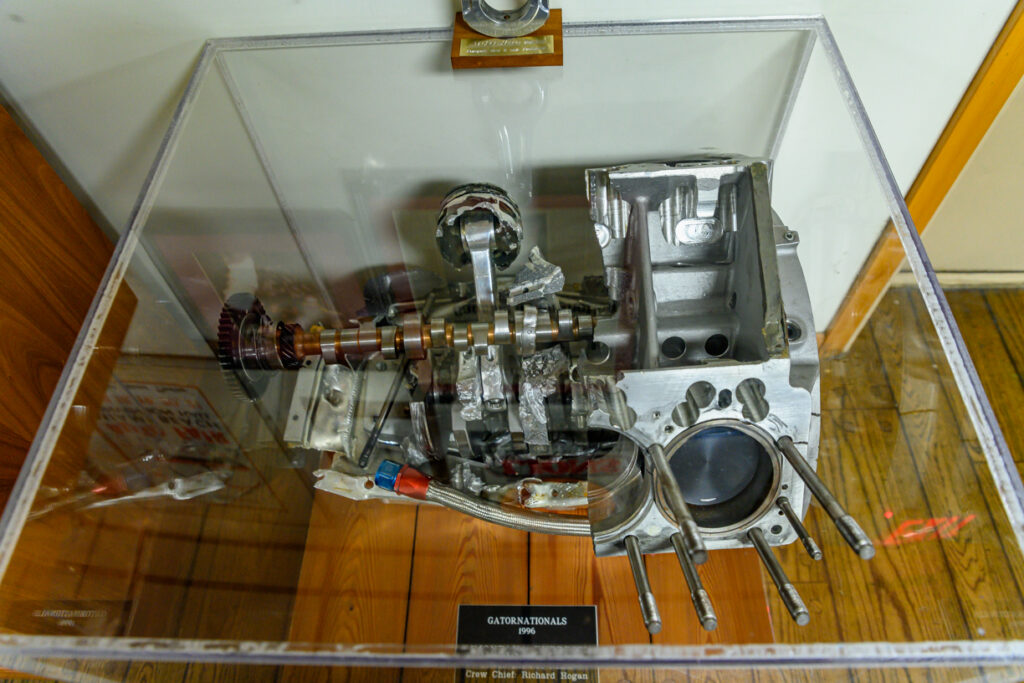
The Back Room
The back room at the museum is more of the same, but maybe even more packed than the front room. Though there are a few Swamp Rats in this room, it has many notable gassers, drag cars, and Funny Cars. You could easily spend a few substantial hours looking at the cars in this collection. You will stand there in awe, thinking about what was going through the minds of the innovators who went outside the box to push the limits of performance.
In this room, you will see a few John Force Funny Cars, Jungle Jim’s Funny Car, Bruce Larson’s USA-1 Chevelle, Bill “Grumpy” Jenkins’ Pinto, “Ohio” George Montgomery’s ’34 Ford Coupe, Raymond Beadle’s Blue Max Funny Car, rocket cars, a V-12 Allison-engined dragster, and Swamp Rat 31. SR31 was made famous when Big Daddy went upside down, backward, and on fire through the finish line in Spokane at 215mph. On that run, the car set the low E.T. of 5.51 seconds. A sculpture of the car pointing skyward adorns the monument for the International Hall of Fame outside.
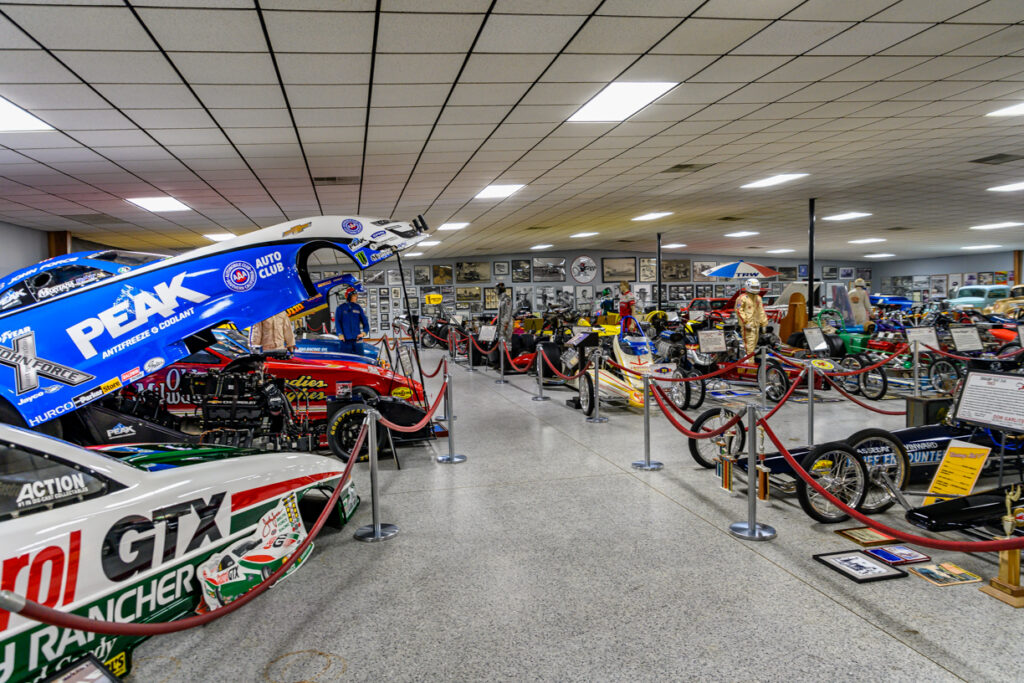
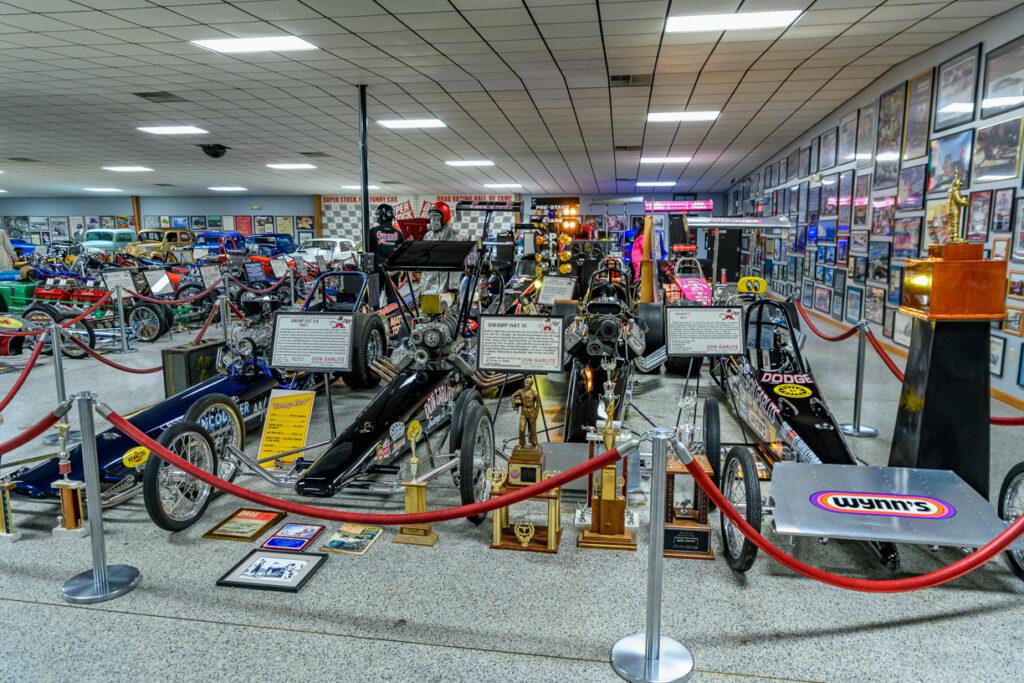

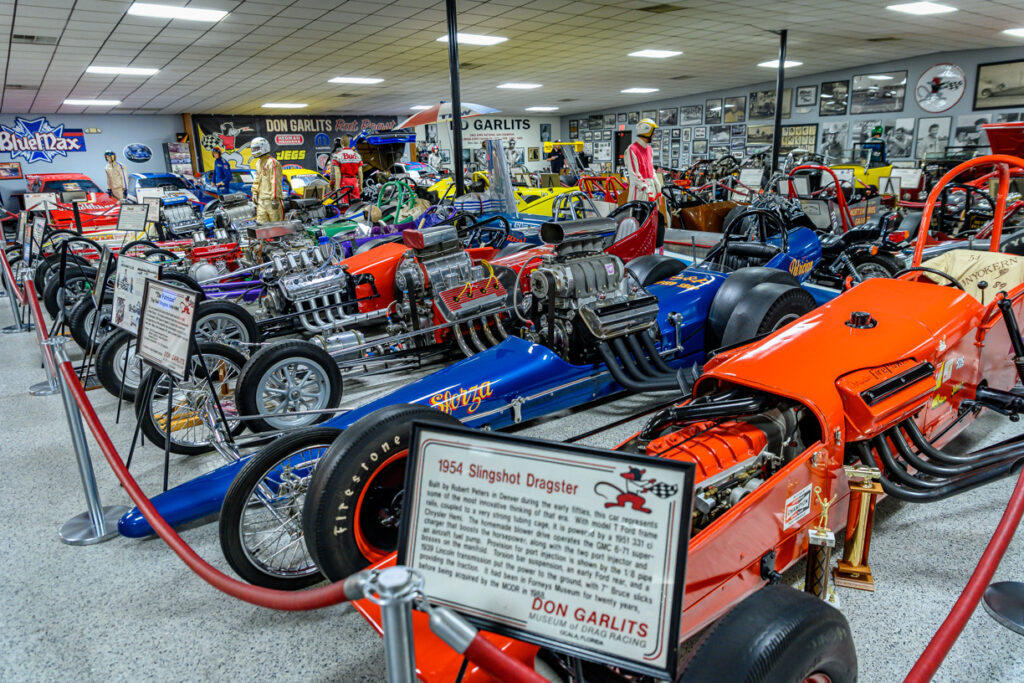
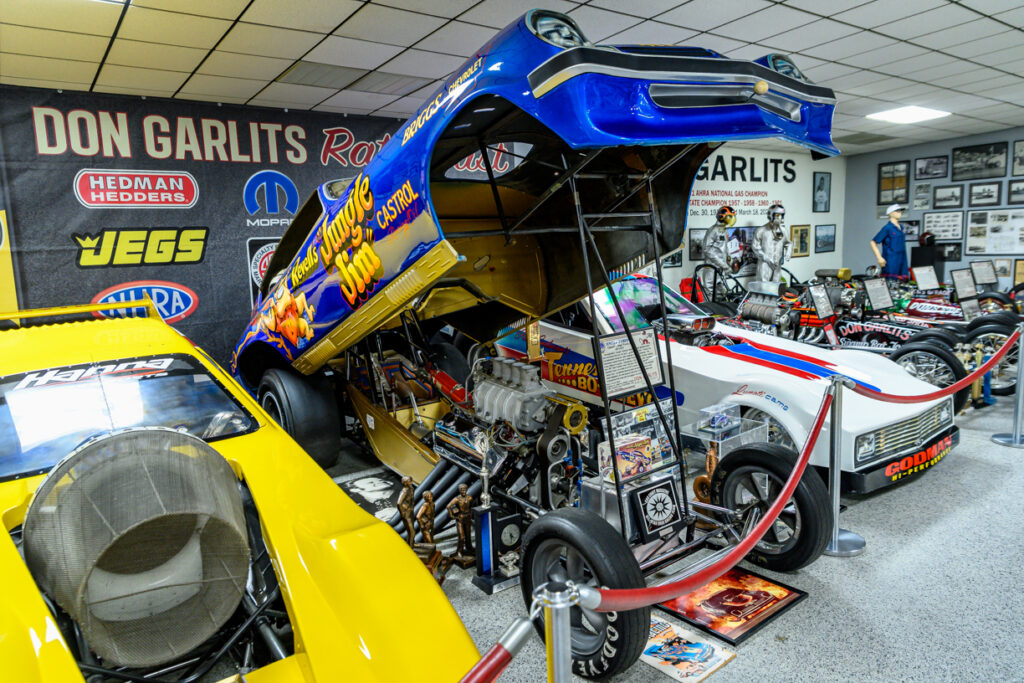
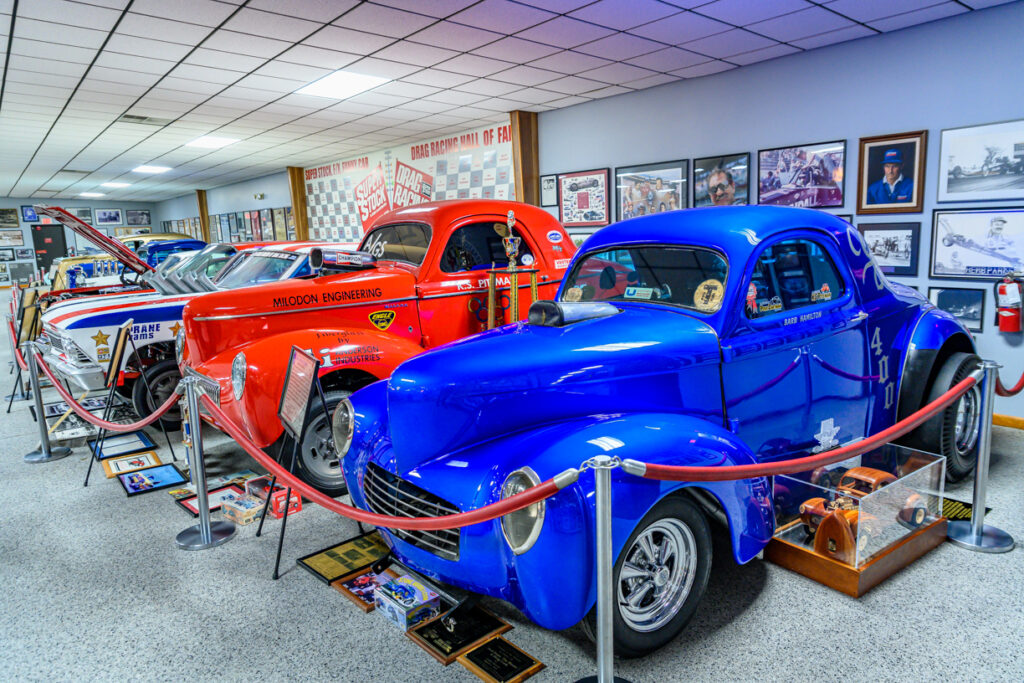
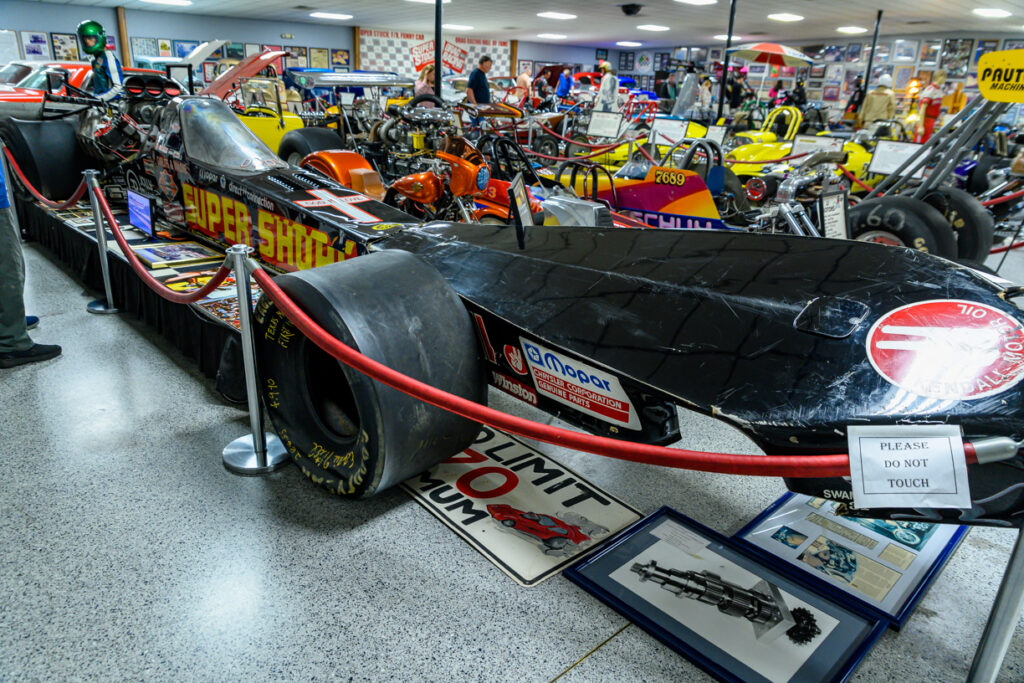
The Back Building
The museum’s back building is full of classic cars. Though most of them have nothing to do with drag racing, you would be doing yourself a disservice to skip that building. There are some truly rare things in there! Like the rest of the museum, you could spend hours upon hours walking through the aisles and looking at the walls. There is an incredible diorama replicating an old shop, a N.O.S Ford-59A engine still in its original crate, a ’34 Ford flathead cutaway, Smokey Yunick’s Hudson Hornet engine, and even a 1952 Chrysler-powered Victory Siren.
Significant cars in this room are numerous. There is a ’36 Ford that is noted as probably the most original one in existence, with only 72,000 miles. A 1932 Dodge Coupe with only 58,000 miles sits there completely unmolested. Some very early rare autos include two Metz cars from 1913 and 1914, respectively, and a 1926 Moon Deluxe Sedan. One vehicle that didn’t appear to belong until you read the placard was a 1986 Fiero. It was Smokey Yunick’s “Hot Vapor Car.” Yunick worked with GM to get 52 MPG out of the little four-cylinder!


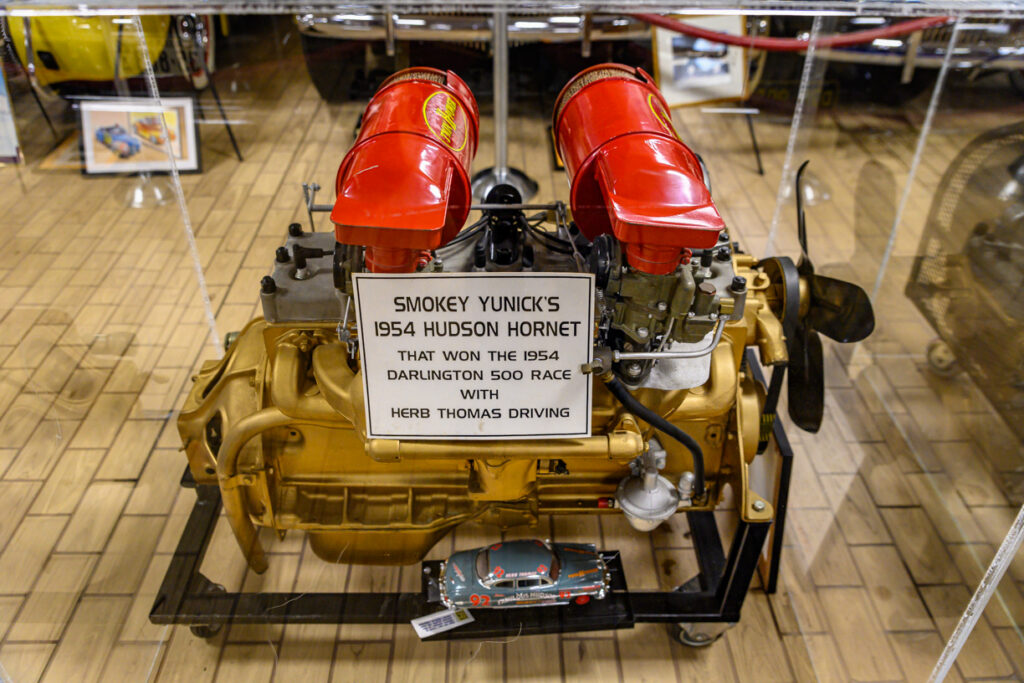
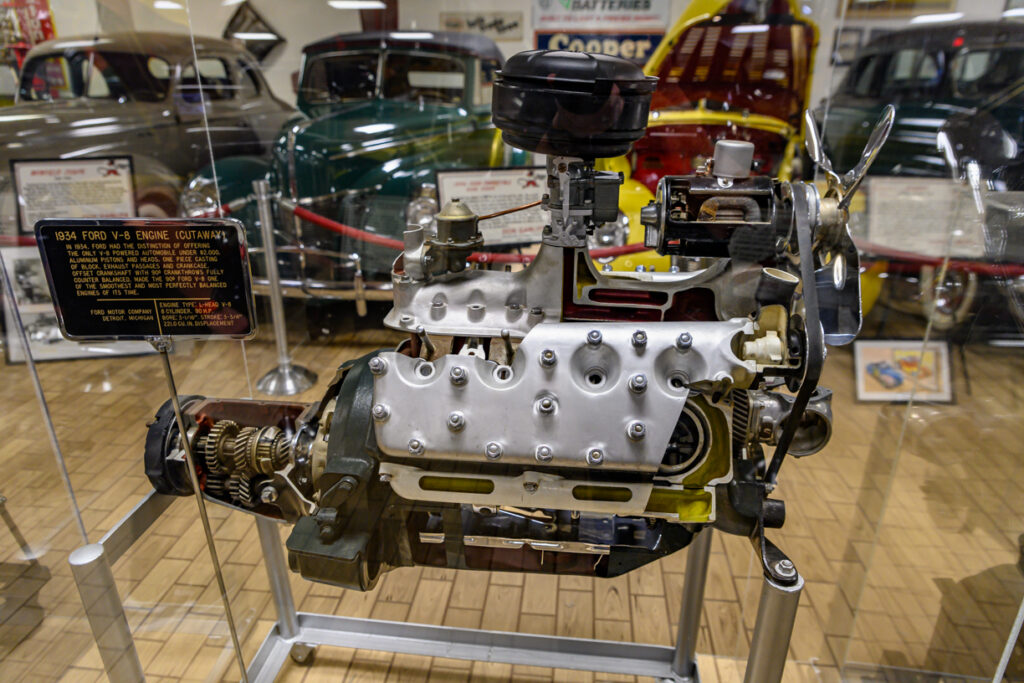
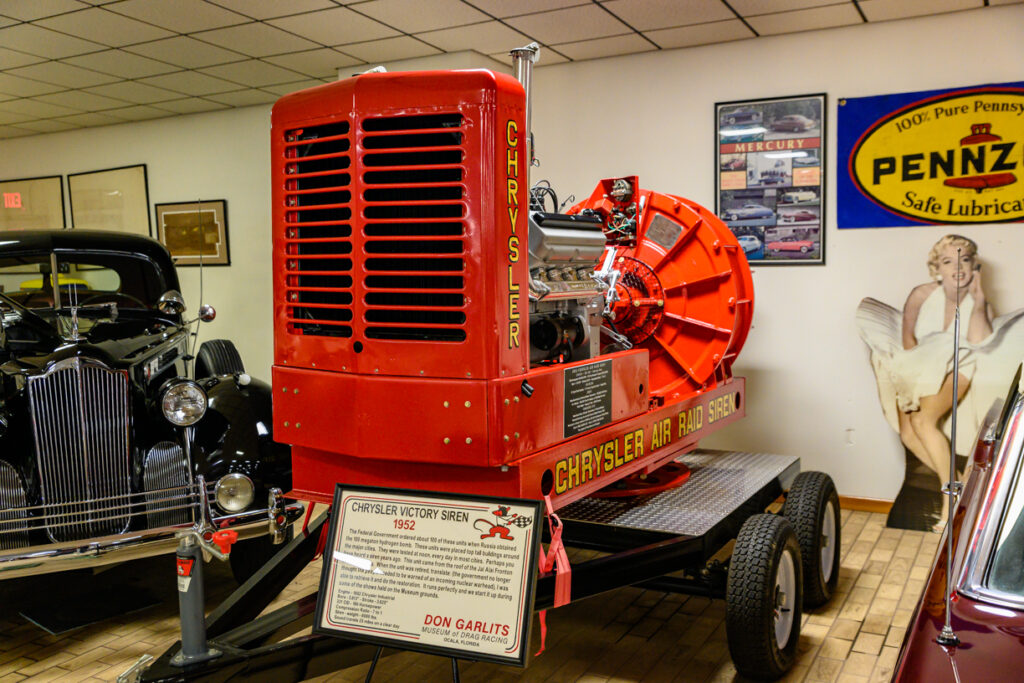
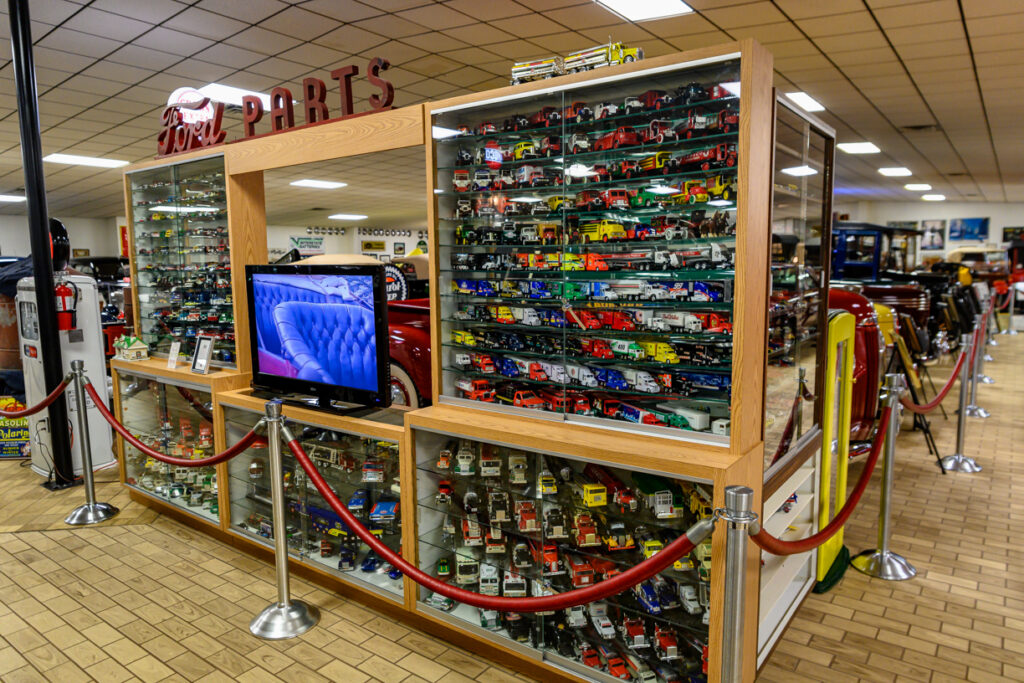


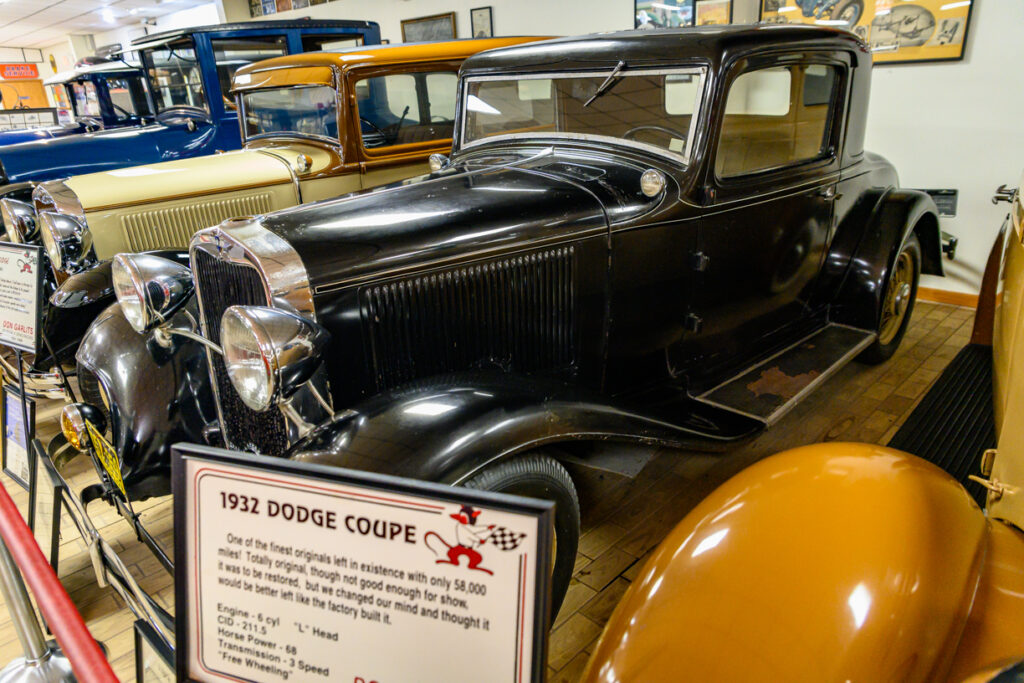
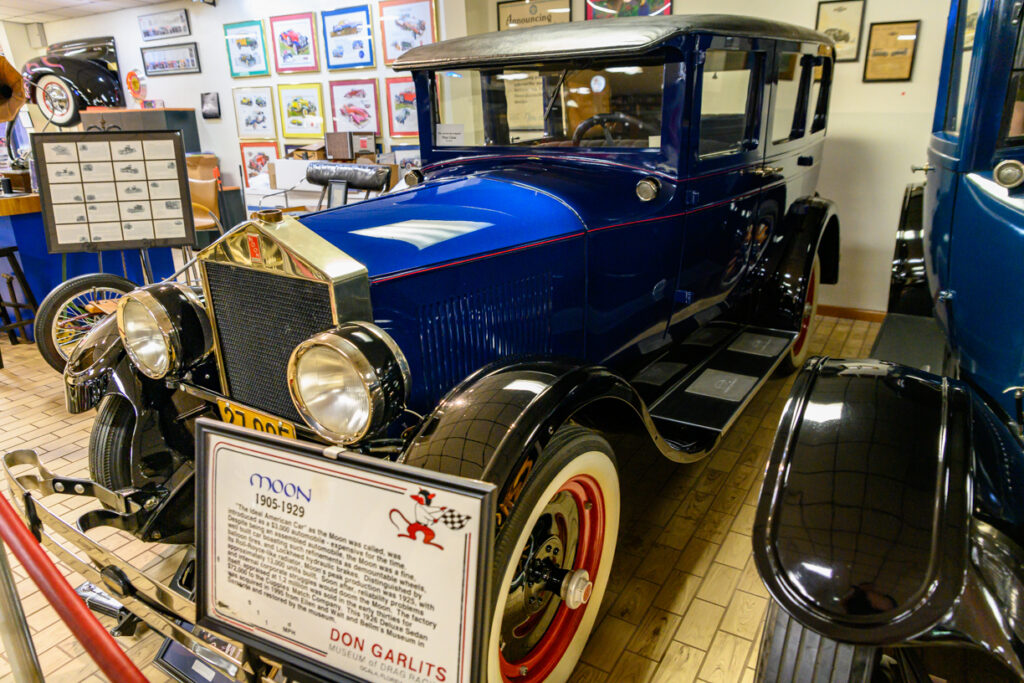
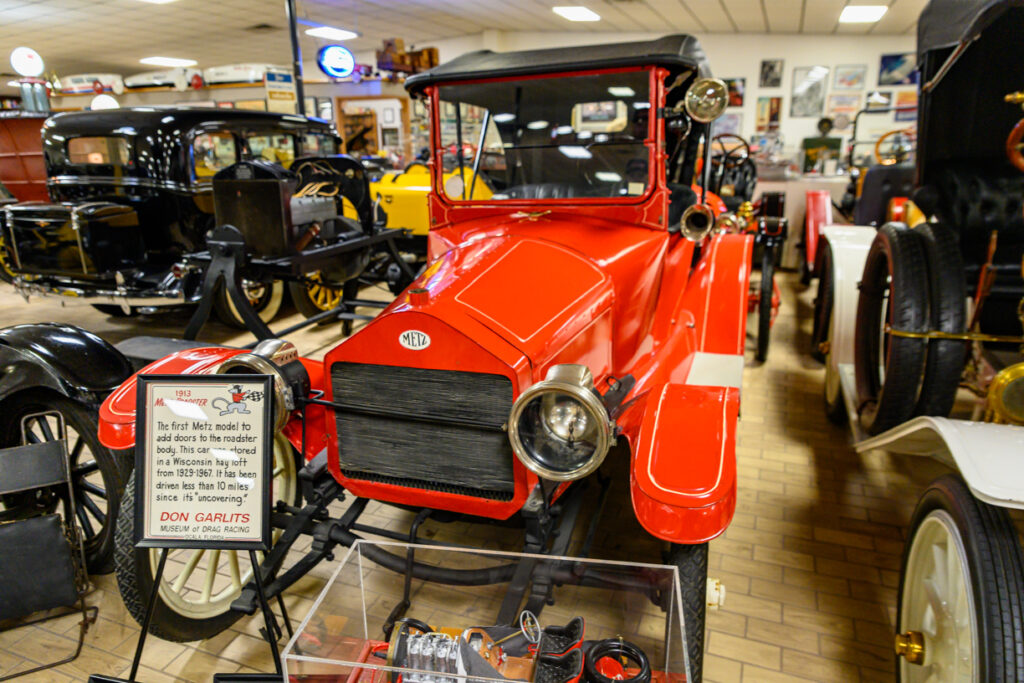
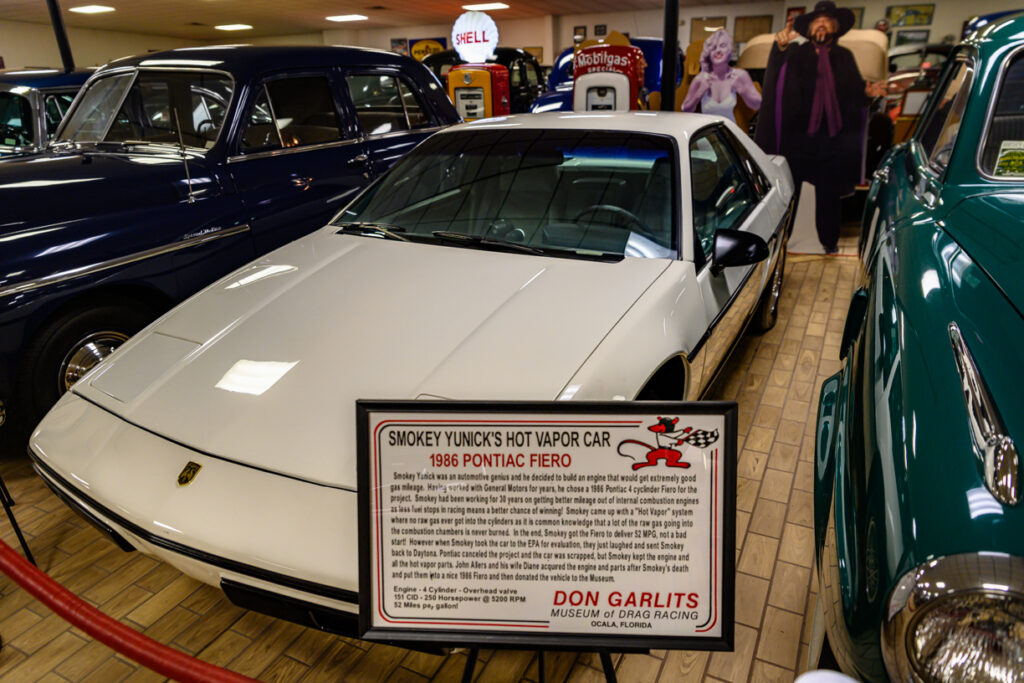
The back building is full of significant early hot rods, classics, and innovative rides.
The Monument
Outside the museum on the grounds is the granite monument to all of the inductees to the International Drag Racing Hall of Fame. As the monument states: “Preserving the rich history of drag racing and honoring those individuals who have made an outstanding contribution to the sport.” Though the HoF was formed in 1976, the first class was inducted in 1991. For a list of the inductees and an explanation about each, visit the museum website and click on the Hall of Fame tab. It is a terrific trip down memory lane.
If you ever find yourself near the Ocala, Florida, area. We highly recommend carving out some time to visit Don Garlits Museum of Drag Racing. Whether you are a diehard fan or just a casual observer, there is something for everyone. And who knows, you might even get lucky enough to meet the man himself. At 91 years old, Big Daddy Don Garlits is as active as ever and loves talking about the history of this amazing sport!
